SCHEME OF WORK
WEEKS TOPICS
1. Revision of Last Term’s work
2. Cultism: (a) Meaning of cultism. (b) Causes of cultism – (i) home background (ii) peer group influence (iii) exposure to foreign values (iv) proliferation of arms (v) drug/substance abuse (vi) poor leadership, and (vii) injustice/marginalization. (c) Consequences of cultism – (i) violence, (ii) breakdown of social values, (iii) criminal tendencies, and (iv) moral decadence. (d) Solutions to cultism.
3. Science and Technology in Development: (a) Meaning of Science and Technology. (b) The importance of Science and Technology.
4. Modern Science and Technology and Societal Development: (a) Types of traditional science and technology e.g. pottery, ties, and dye. (b) Some traditional Science and technologies influenced by modernization – traditional musical instruments, means of water transportation as canoes, etc. (c) Influence of science and technology (modern and traditional), on societal development – Agriculture, construction, transportation.
5. Evolution Theory: (i) Uniqueness of man (ii) Universality of Man (iii) Races (iv) Racism
Common Hair Styles: (a) Common hair styles for women and men in the locality (Hausa, Igbo, Yoruba, Fulani hair styles). (b) Present day hairstyles for male and female e.g. skin-cut and low-cut for males, fixing of hair, Bob Marley for females.
6. Adornments: (a) Meaning of adornments – those cultural items used by people to beautify themselves. (b) Adornments commonly used in Nigerian communities (beads, chains, rings, etc).
7. Religion: (a) The meaning of religion as beliefs about the existence of God and Human behaviour. (b) The names we call God in different communities in Nigeria. (Allah, Chukwu, Ohomorihi, Olorun, Oghene, Osanobua, Abasi). (c) Types of religion – Christianity, Islam, African Traditional Religion. (d) Things our religions teach us – honesty, faith in God, love for another, holiness, patience, tolerance. (e) Similarities in our religions, e.g. one God, regulate human behaviour, agent of social orientation, peace co-existence, etc.
8. Educational institutions- meaning, types, structures and functions.
9. Our School: (a) Meaning of school e.g. a place where people learn. (b) Description of a school e.g. it contains teachers, students, other workers, buildings and sport field- technique and learning, there are channels of communication, rules and regulations etc.
10. Members of the School Community: (a)Members of school community e.g. head teachers, teachers, children, cleaners, etc. (b) Duties of school community members- obedience, respect for leaders, loyalty, cooperation, discipline, honesty, responsibility, etc. (c)Ways of encouraging members of the school community to perform their duties more effectively e.g. service, appreciation, rewards, etc.
11.Accidents in the School: (a) Types of accidents in the school – cuts, burns, electrical shocks, falls, bruises, sprains, etc. (b) Preventing and Taking care of accidents in the school – (i) How to prevent accidents in the school. (ii) Remove all dangerous things from the ground. (iii) Do not play with dangerous instruments (iv) Avoid exposed (live) electricity cable/wire. (v) In case of accidents – Report to parents/ elderly persons/ teachers, give a first aid care, take victims to nearby hospitals/clinic, remove what has caused the accidents.
12. Leadership and followership- meaning and types of leadership, qualities and choice of a leader, functions of a leader.
13. Revision.
2ND TERM
WEEK 1
LESSON 1
TOPIC: Cultism
CONTENT:
(a) Meaning of cultism.
(b)Causes of cultism
Meaning of Cultism
A cult is small group of people who have extreme belief and ideas which only members have access to. Cultism can therefore be defined as a ritual practice by a group of people whose membership, initiation, policy, activities etc. are done secretly.

Causes of Cultism
Many reasons are responsible for joining cults in Nigeria today the following are some of the causes of cultism in Nigeria today.
1. Home Background: The way a person is brought up sometimes affects the kind of person he or she grows up to become. A child who grows up in a home where the parents belong to one cult or the other is bound to become a cultist later in his or her life.
2. Peer Group Influence: “Show me your friend and l will tell you who you are”. This adage has proved itself beyond all doubts, people who make friends with cultist end up becoming cultist themselves.
3. Exposure To Foreign Values: The types of films and books a person has access to can influence the persons way of life. The mass media through films have contributed immensely to the development of secret cult activities in Nigeria.
4. Proliferation Of Arms In The Society: As more alms find their way illegally into the streets, guns, battle axes, etc are easy to get. The youths who are not matured enough to know the implication of indiscriminate use of alms are now in possession of such arms. The urge to experiment with these arms is there and a cult is the best avenue through which such arms can be used.
5. Poor Leadership: The decline in the educational sector due to poor leadership has created an atmosphere of lawlessness unrest in our schools. The lawlessness can lead to formation of cults in our schools.
6. Injustice/Marginalization: Injustice marginalization spur cult activities. Presently, wealth, jobs development etc are unevenly distributed in Nigeria. This has motivated young people to form cult through which they can fight injustice and marginalization in the society.
7. Need For respect: The desire for respect and recognition that are accorded to known members of campus street cults

Evaluation:
1. What is cultism?
2. List and explain three causes of cultism
LESSON 2
Consequences Of Cultism
1. Violence: This is one of the major effects of cultism in our society. Members of cult carry our various violent activities in school where they are. They indulge activities like torture, killing, maiming, kidnapping, robbery; they unleash terror on campus, secondary schools and even in towns where they operate.
2. Breakdown Of Social Values: Societal norms and accepted values are thrown away as a result of cult activities in places where they thrive. Social values such as respect for life, self discipline, respect for the law etc. are abandoned by cultist who takes the law into their hands whenever they are operating.
3. Criminal Tendencies: It has been observed that members of cults have criminal behaviours like raping unsuspecting girls on campus, threatening teachers and lectures for high grades, part taking in armed robbery, being used as political thugs and assassins etc. they are bound to be criminal minded.
4. Moral Decadence: The increasing number of people who are cultist in the society has lead to a sharp fall in moral standards.
5. It Leads To The Abuse Of Illegal Drugs: All cult members use hard drugs, this help them to carry out their violent activities.
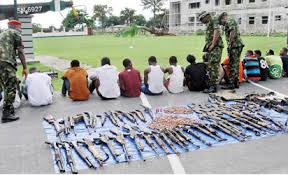
Solutions To Cultism
1. Undertaking: Both parents and the students should sign an undertaking in which students should promise not to join secret cult.
2. Security: There should be a strong and effective security machinery to enforce anti cultism law in Nigeria.
3. Strict Penalty: Any student caught belonging to a secret cult should be treated as a murderer.
4. Adequate Funding of the University will prevent cultism
5. Justice: University Administrators and lecturers should be fair and just to all students.
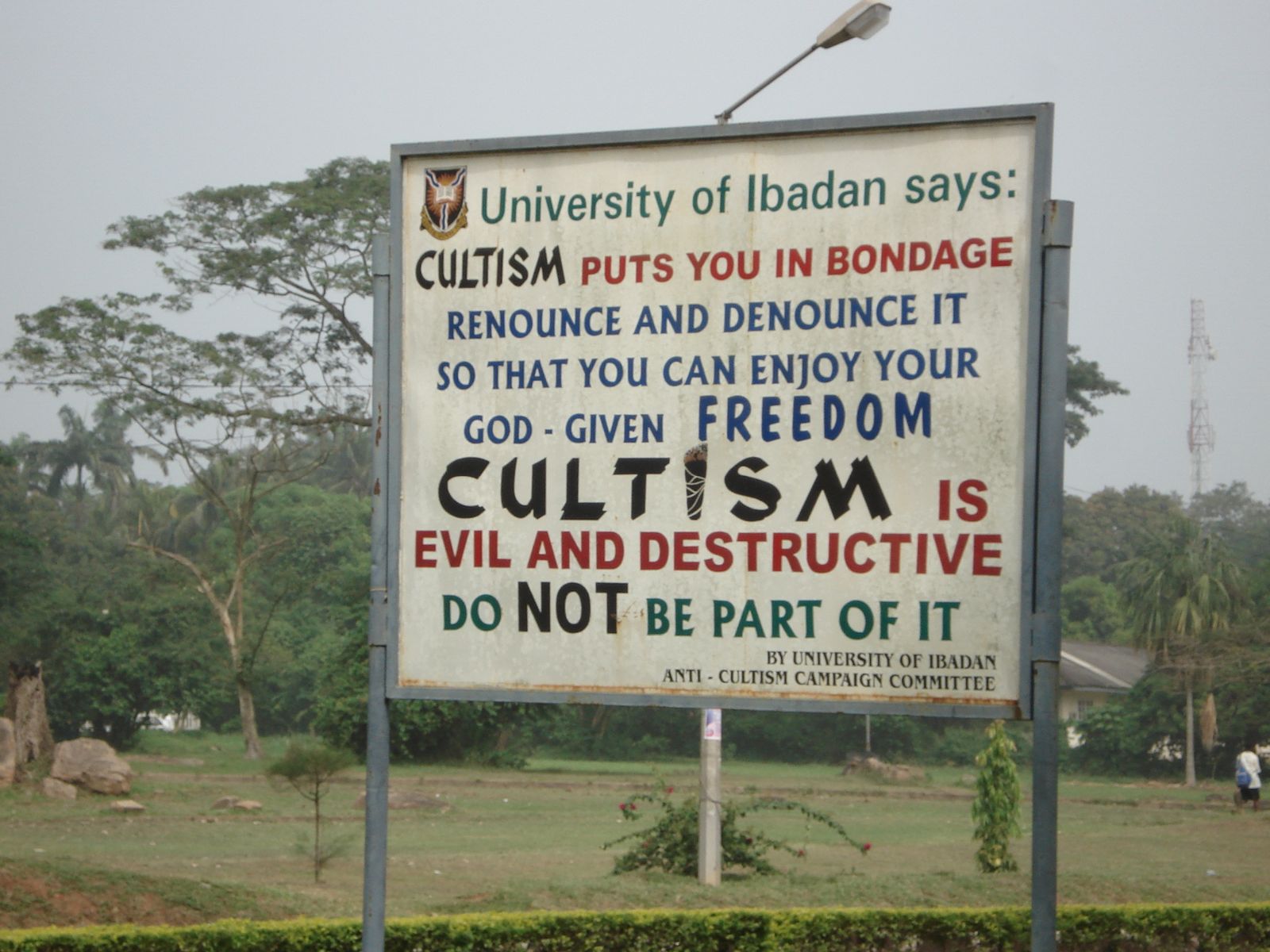
EVALUATION:
1. Outline three consequences of cultism
2. Give two solution to the problem of cultism
https://www.slideshare.net/onikerahaman ... in-nigeria
READING ASSIGNMENT: - Read chapter 4 of Solakat Social studies for Junior Secondary School Volume two by A. Oluwasola Oyewole pages 15-17
ASSIGNMENT
OBJECTIVE QUESTIONS
1. ……….. a ritual practice by a group of people whose membership, initiation, policy, activities etc. are done secretly.
a. Night guide b. Nurse c. Cult
2. One of the following is not a cause for cultism.
a. Home background b. Violent c. Poor leadership
3. Exposure to foreign values can cause cultism True or False
4. Since most cultists do not have time to study and do not want to fail they indulge in ……….
a. Violence b. cultism c. examination malpractice
5. Rich influential people who fund cults in schools should be punished. True or False.
THEORY
1. Define cultism
2. Give four causes of cultism
3. Mention four consequences of cultism.
4. Give four solutions to the problem of cultism in Nigeria.
TOPIC: Cultism
CONTENT:
(a) Meaning of cultism.
(b)Causes of cultism
Meaning of Cultism
A cult is small group of people who have extreme belief and ideas which only members have access to. Cultism can therefore be defined as a ritual practice by a group of people whose membership, initiation, policy, activities etc. are done secretly.

Causes of Cultism
Many reasons are responsible for joining cults in Nigeria today the following are some of the causes of cultism in Nigeria today.
1. Home Background: The way a person is brought up sometimes affects the kind of person he or she grows up to become. A child who grows up in a home where the parents belong to one cult or the other is bound to become a cultist later in his or her life.
2. Peer Group Influence: “Show me your friend and l will tell you who you are”. This adage has proved itself beyond all doubts, people who make friends with cultist end up becoming cultist themselves.
3. Exposure To Foreign Values: The types of films and books a person has access to can influence the persons way of life. The mass media through films have contributed immensely to the development of secret cult activities in Nigeria.
4. Proliferation Of Arms In The Society: As more alms find their way illegally into the streets, guns, battle axes, etc are easy to get. The youths who are not matured enough to know the implication of indiscriminate use of alms are now in possession of such arms. The urge to experiment with these arms is there and a cult is the best avenue through which such arms can be used.
5. Poor Leadership: The decline in the educational sector due to poor leadership has created an atmosphere of lawlessness unrest in our schools. The lawlessness can lead to formation of cults in our schools.
6. Injustice/Marginalization: Injustice marginalization spur cult activities. Presently, wealth, jobs development etc are unevenly distributed in Nigeria. This has motivated young people to form cult through which they can fight injustice and marginalization in the society.
7. Need For respect: The desire for respect and recognition that are accorded to known members of campus street cults

Evaluation:
1. What is cultism?
2. List and explain three causes of cultism
LESSON 2
Consequences Of Cultism
1. Violence: This is one of the major effects of cultism in our society. Members of cult carry our various violent activities in school where they are. They indulge activities like torture, killing, maiming, kidnapping, robbery; they unleash terror on campus, secondary schools and even in towns where they operate.
2. Breakdown Of Social Values: Societal norms and accepted values are thrown away as a result of cult activities in places where they thrive. Social values such as respect for life, self discipline, respect for the law etc. are abandoned by cultist who takes the law into their hands whenever they are operating.
3. Criminal Tendencies: It has been observed that members of cults have criminal behaviours like raping unsuspecting girls on campus, threatening teachers and lectures for high grades, part taking in armed robbery, being used as political thugs and assassins etc. they are bound to be criminal minded.
4. Moral Decadence: The increasing number of people who are cultist in the society has lead to a sharp fall in moral standards.
5. It Leads To The Abuse Of Illegal Drugs: All cult members use hard drugs, this help them to carry out their violent activities.

Solutions To Cultism
1. Undertaking: Both parents and the students should sign an undertaking in which students should promise not to join secret cult.
2. Security: There should be a strong and effective security machinery to enforce anti cultism law in Nigeria.
3. Strict Penalty: Any student caught belonging to a secret cult should be treated as a murderer.
4. Adequate Funding of the University will prevent cultism
5. Justice: University Administrators and lecturers should be fair and just to all students.

EVALUATION:
1. Outline three consequences of cultism
2. Give two solution to the problem of cultism
https://www.slideshare.net/onikerahaman ... in-nigeria
READING ASSIGNMENT: - Read chapter 4 of Solakat Social studies for Junior Secondary School Volume two by A. Oluwasola Oyewole pages 15-17
ASSIGNMENT
OBJECTIVE QUESTIONS
1. ……….. a ritual practice by a group of people whose membership, initiation, policy, activities etc. are done secretly.
a. Night guide b. Nurse c. Cult
2. One of the following is not a cause for cultism.
a. Home background b. Violent c. Poor leadership
3. Exposure to foreign values can cause cultism True or False
4. Since most cultists do not have time to study and do not want to fail they indulge in ……….
a. Violence b. cultism c. examination malpractice
5. Rich influential people who fund cults in schools should be punished. True or False.
THEORY
1. Define cultism
2. Give four causes of cultism
3. Mention four consequences of cultism.
4. Give four solutions to the problem of cultism in Nigeria.
WEEK 2
LESSON 3
SPECIFIC TOPIC: MEANING OF EDUCATIONAL INSTITUTIONS.
REFERENCE BOOKS: Social Studies for Nigerian JSS Book 2, by Remi E. Aiyede Et al. Basic Social Studies For Nigeria Secondary Schools by Anikpo et al.
Simplified Social Studies for JSS by Ogunwale A.
PERFORMANCE OBJECTIVES: At the end of the lesson, the students should be able to:
1. define educational institutions
2 list different types of educational institutions.
3. list the structures of educational institutions in Nigeria.
CONTENTS:
EDUCATIONAL INSTITUTIONS.
Educational institutions are means by which people are given instructions about their ways of life and how to strengthen the powers of the mind and body in a particular environment
There are two groups of educational institutions according to their nature. They are FORMAL and INFORMAL.
Formal educations are institutions established by law, organized, and have a well defined programme of studies.
STRUCTURES OF FORMAL EDUCATION.
The structures of formal education are as followed:
1. Nursery: this is for children between the age of 3 and 5.

2. Primary school: This is for children between the ages of 6 and 12.
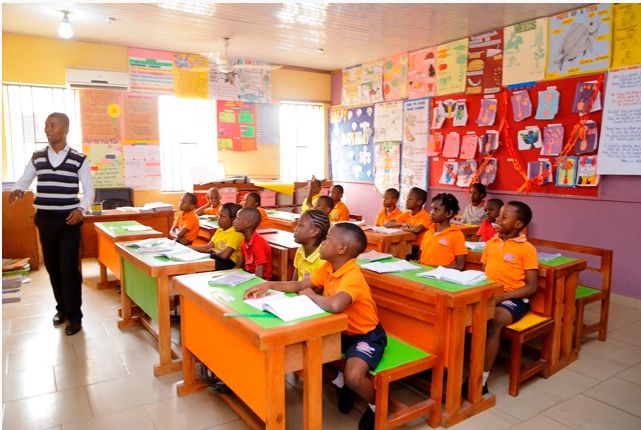
3. Secondary school: This is for children from the age of 11, and this is divided into Junior and Senior secondary schools.

4. Teacher's training colleges: There is no age limit for these schools in Nigeria but the minimum age for entry into such schools is 13 years.

5. Colleges of Arts and Science, Polytechnics, Colleges of Technology.

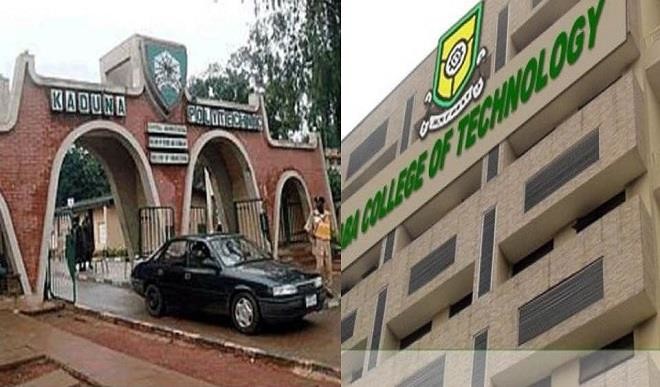
6. Universities: these are degree awarding institutions and with specialized courses.

7. Special schools: school for the blind, deaf and dumb.

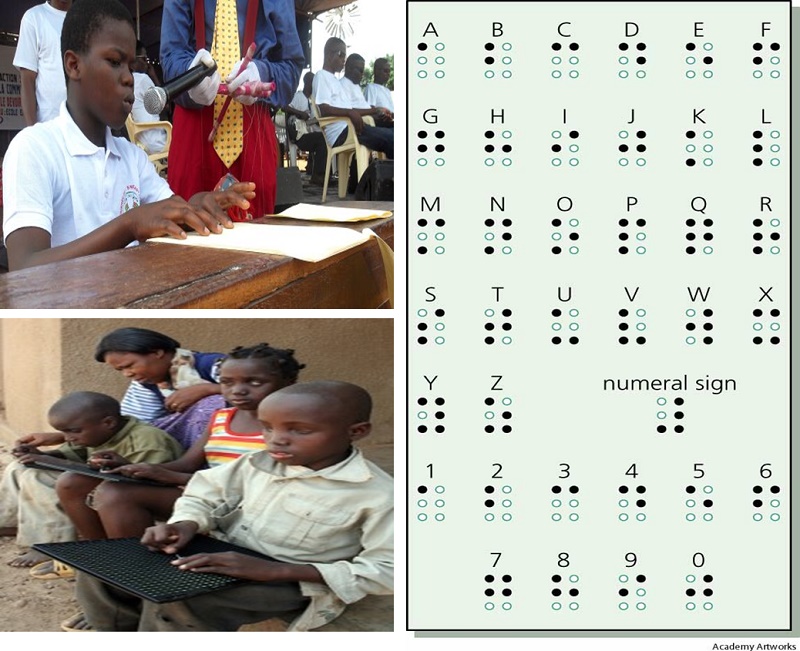
EVALUATION/ CLASSWORK:
1. what is an educational institution?
2. List four types of educational institutions in Nigeria.
3. List the structures of educational institutions in Nigeria.
ASSIGNMENTS:
List 10 federal universities and 10 federal polytechnics in Nigeria.
further studies
http://en.wikipedia.org/wiki/Types_of_e ... stitutions
http://www.nigerianembassy.or.kr/nigeria/education.asp
LESSON 4
SPECIFIC TOPIC: FUNCTIONS OF FORMAL EDUCATION.
REFERENCE BOOKS: Social Studies for Nigerian JSS Book 1, by Remi E. Aiyede Et al. Basic Social Studies For Nigeria Secondary Schools by Anikpo et al.
Simplified Social Studies for JSS by Ogunwale A.
PERFORMANCE OBJECTIVES: At the end of the lesson, the students should be able to:
1. list the functions of formal education.
2. list the advantages of formal education.
CONTENTS:
FUNCTIONS OF FORMAL EDUCATIONS.
The following are the functions of formal education in Nigeria.
1. To teach the art of reading and writing. It removes illiteracy.
2. It gives all round training to the pupils to prepare them fit to live in a larger community.
3. It produces good citizens that are able to know or differentiate between right and wrong.
4. Formal education like informal education is an agent of social change, promoting the much needed national unity and by emphasizing factors of common identity in an area.
5. It performs the function of preparing pupils or students for a better future.

ADVANTAGES OF FORMAL EDUCATION.
1. It trains people to become administrators and leaders.
2. It enables a nation to have a common official.
3. It has the advantage of fostering social political awareness.
4. It brings socio- economic development.
5. It is a means of training people for means of living and self- sufficiency.
EVALUATION/ CLASSWORK:
1. What are the functions of formal education?
2.List four advantages of formal education in Nigeria.
HOME WORK/ ASSIGNMENT
Complete the age limit, aim, duration and certificate awarded to the following schools
in a tabular form:
a. Primary schools,
b. Secondary schools,
c. Teachers training schools,
d. Polytechnics
e. Universities.
LESSON 5
MAIN TOPIC: EDUCATIONAL INSTITUTIONS.
SPECIFIC TOPIC: INFORMAL EDUCATION.
REFERENCE BOOK: Social Studies for Nigerian JSS Book 1, by Remi E. Aiyede Et al. Basic Social Studies for Nigeria Secondary Schools by Anikpo et al. Simplified Social Studies for
JSS by Ogunwale A.
PERFORMANCE OBJECTIVES: At the end of the lesson, the students should be able to:
1. define informal education.
2. list the structures of informal education.
3. list the functions of formal education.
CONTENTS:
INFORMAL EDUCATION.
This is the type of education which one receives without going through a planned programme. It is not impacted at school, and it does not aim at a specific goal.
STRUCTURES AND FUNCTIONS OF INFORMAL EDUCATION.
The following are the structures of informal education:
1. Home and family.
2. The peer groups.
3. Religious institutions.
4. Community.
5. The mass media.

FUNCTIONS.
1. It is the first place where behaviour of a child is formed. Most especially the family.
2. It can also determine the future behaviour of a child, especially courtesy.
3. It provides the forum for acceptability or adaptation to the demands of the society
4. It trains the child to be a better citizen of the community.
5. Some religious institutions teach members to read and write, though not in a planned fashion.
6. Good sanitation is one of those things the society expects people to live up to.
7. Mass media teaches the society and enlighten people on what is right and wrong.
EVALUATION/ CLASSWORK:
1. What is informal education?
2. List the structures of informal education.
3. Enumerate the functions of informal education in Nigeria.
HOME WORK/ ASSIGNMENT:
1. What are the agents through which informal education is carried out?
2. List four differences between formal and informal education.
further studies
https://www.slideshare.net/yogeshmhaske ... n-66292303
practice test
http://www.sagepub.com/ballantine3e/stu ... z/Quiz.swf
SPECIFIC TOPIC: MEANING OF EDUCATIONAL INSTITUTIONS.
REFERENCE BOOKS: Social Studies for Nigerian JSS Book 2, by Remi E. Aiyede Et al. Basic Social Studies For Nigeria Secondary Schools by Anikpo et al.
Simplified Social Studies for JSS by Ogunwale A.
PERFORMANCE OBJECTIVES: At the end of the lesson, the students should be able to:
1. define educational institutions
2 list different types of educational institutions.
3. list the structures of educational institutions in Nigeria.
CONTENTS:
EDUCATIONAL INSTITUTIONS.
Educational institutions are means by which people are given instructions about their ways of life and how to strengthen the powers of the mind and body in a particular environment
There are two groups of educational institutions according to their nature. They are FORMAL and INFORMAL.
Formal educations are institutions established by law, organized, and have a well defined programme of studies.
STRUCTURES OF FORMAL EDUCATION.
The structures of formal education are as followed:
1. Nursery: this is for children between the age of 3 and 5.

2. Primary school: This is for children between the ages of 6 and 12.

3. Secondary school: This is for children from the age of 11, and this is divided into Junior and Senior secondary schools.

4. Teacher's training colleges: There is no age limit for these schools in Nigeria but the minimum age for entry into such schools is 13 years.

5. Colleges of Arts and Science, Polytechnics, Colleges of Technology.


6. Universities: these are degree awarding institutions and with specialized courses.

7. Special schools: school for the blind, deaf and dumb.


EVALUATION/ CLASSWORK:
1. what is an educational institution?
2. List four types of educational institutions in Nigeria.
3. List the structures of educational institutions in Nigeria.
ASSIGNMENTS:
List 10 federal universities and 10 federal polytechnics in Nigeria.
further studies
http://en.wikipedia.org/wiki/Types_of_e ... stitutions
http://www.nigerianembassy.or.kr/nigeria/education.asp
LESSON 4
SPECIFIC TOPIC: FUNCTIONS OF FORMAL EDUCATION.
REFERENCE BOOKS: Social Studies for Nigerian JSS Book 1, by Remi E. Aiyede Et al. Basic Social Studies For Nigeria Secondary Schools by Anikpo et al.
Simplified Social Studies for JSS by Ogunwale A.
PERFORMANCE OBJECTIVES: At the end of the lesson, the students should be able to:
1. list the functions of formal education.
2. list the advantages of formal education.
CONTENTS:
FUNCTIONS OF FORMAL EDUCATIONS.
The following are the functions of formal education in Nigeria.
1. To teach the art of reading and writing. It removes illiteracy.
2. It gives all round training to the pupils to prepare them fit to live in a larger community.
3. It produces good citizens that are able to know or differentiate between right and wrong.
4. Formal education like informal education is an agent of social change, promoting the much needed national unity and by emphasizing factors of common identity in an area.
5. It performs the function of preparing pupils or students for a better future.

ADVANTAGES OF FORMAL EDUCATION.
1. It trains people to become administrators and leaders.
2. It enables a nation to have a common official.
3. It has the advantage of fostering social political awareness.
4. It brings socio- economic development.
5. It is a means of training people for means of living and self- sufficiency.
EVALUATION/ CLASSWORK:
1. What are the functions of formal education?
2.List four advantages of formal education in Nigeria.
HOME WORK/ ASSIGNMENT
Complete the age limit, aim, duration and certificate awarded to the following schools
in a tabular form:
a. Primary schools,
b. Secondary schools,
c. Teachers training schools,
d. Polytechnics
e. Universities.
LESSON 5
MAIN TOPIC: EDUCATIONAL INSTITUTIONS.
SPECIFIC TOPIC: INFORMAL EDUCATION.
REFERENCE BOOK: Social Studies for Nigerian JSS Book 1, by Remi E. Aiyede Et al. Basic Social Studies for Nigeria Secondary Schools by Anikpo et al. Simplified Social Studies for
JSS by Ogunwale A.
PERFORMANCE OBJECTIVES: At the end of the lesson, the students should be able to:
1. define informal education.
2. list the structures of informal education.
3. list the functions of formal education.
CONTENTS:
INFORMAL EDUCATION.
This is the type of education which one receives without going through a planned programme. It is not impacted at school, and it does not aim at a specific goal.
STRUCTURES AND FUNCTIONS OF INFORMAL EDUCATION.
The following are the structures of informal education:
1. Home and family.
2. The peer groups.
3. Religious institutions.
4. Community.
5. The mass media.

FUNCTIONS.
1. It is the first place where behaviour of a child is formed. Most especially the family.
2. It can also determine the future behaviour of a child, especially courtesy.
3. It provides the forum for acceptability or adaptation to the demands of the society
4. It trains the child to be a better citizen of the community.
5. Some religious institutions teach members to read and write, though not in a planned fashion.
6. Good sanitation is one of those things the society expects people to live up to.
7. Mass media teaches the society and enlighten people on what is right and wrong.
EVALUATION/ CLASSWORK:
1. What is informal education?
2. List the structures of informal education.
3. Enumerate the functions of informal education in Nigeria.
HOME WORK/ ASSIGNMENT:
1. What are the agents through which informal education is carried out?
2. List four differences between formal and informal education.
further studies
https://www.slideshare.net/yogeshmhaske ... n-66292303
practice test
http://www.sagepub.com/ballantine3e/stu ... z/Quiz.swf
WEEK 3
LESSON 6
TOPIC: Science And Technology In Development
CONTENT:
(a) Meaning of Science and Technology.
(b) The importance of science and technology.
Meaning of Science
Science is an organized body of knowledge which depends on theory. It can also be defined as the systematic study of facts through observation, experimentation and analysis then come to conclusion.
Science refers to knowledge that is gained by observing things in detail, testing and recording those observations. This method of observation is known as scientific method
Science deals with the pursuit of organized knowledge and this is based on facts.

Meaning of Technology
Technology is the application of scientific knowledge in the creation of things and solving of man’s problem in his environment. Technology can also be defined as the use of hand and brain to create things to solve man’s problem. Technology has helps man improve his life in all aspect e.g. in areas of transport, medicine, shelter, foods, clothing etc.
Technology is the use of organized knowledge to solve practical problems. Also technology uses scientific principles to make tools and machines.
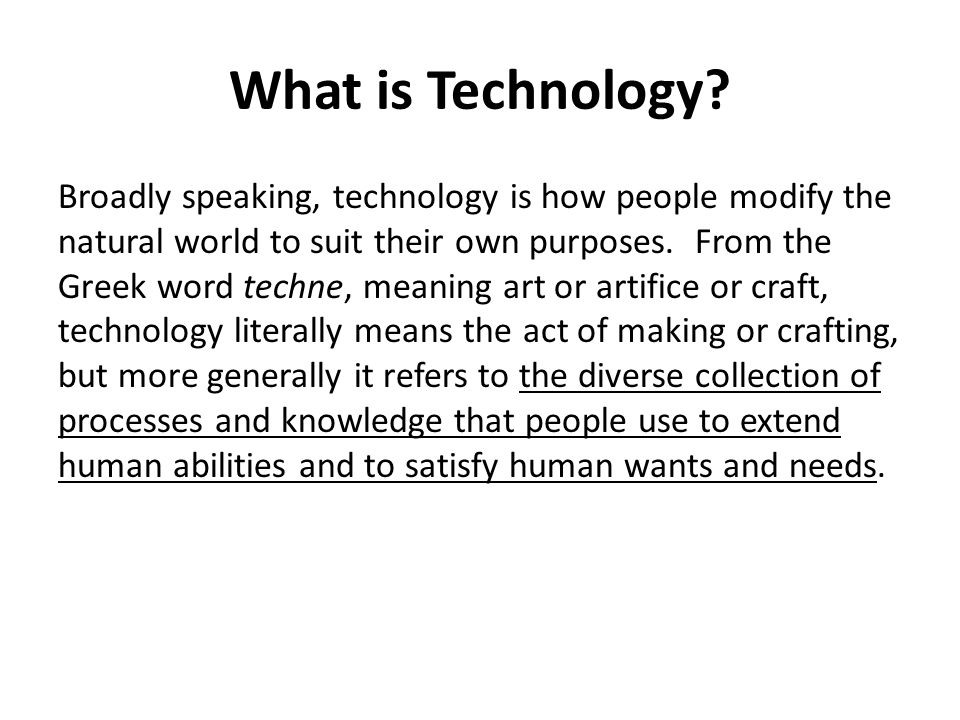
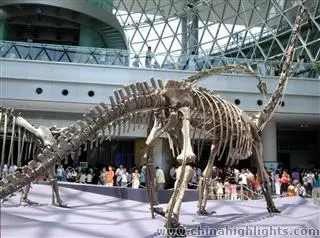
Shanghai Science And Technology Museum
The Importance Of Science And Technology
The importance of science and technology to man cannot be overemphasized. The following are some of the importance of science and technology to man and the society at large.
1. Improved Health Care: The knowledge of science and technology have led to the manufacture of different drugs, hospital equipment and the training of medical personnel who work in hospitals.
2. It Led To Improved Transportation: The developments of science and technology have resulted in the improvement of transportation network as well as the different means of transport. Good roads, railways line, airports etc now link different parts of the world.
3. Improved Communication Network: Science and technology have improved the process of communication tremendously. The world is now a global village because of the speed and ease with which information can be passed.
4. Improved Agricultural Practices and Food Production: Science and technology have led to improved agricultural practice which in turn has brought about increased food production and preservation techniques.
5. Advancement Of The Entertainment Industry: Science and technology has brought about a great improvement in the entertainment industry. Better equipment for production of music and films are now available.
Evaluation:
1. What is science?
2. Define technology.
3. Mention four importance of science and technology.
READING ASSIGNMENT: - Read chapter 15 of Solakat Social studies for Junior Secondary School Volume two by A. Oluwasola Oyewole pages 55-60
ASSIGNMENT
OBJECTIVE QUESTIONS
1. …….. is the systematic study of facts through observation.
a. Technology b. Communication c. Science
2. ……… can be defined as the use of brain to create things to solve man’s problem.
a. Technology b. Communication c. Science
3. Better equipment for production of …….. and……… are now available in entertainment industry. a. Food and water b. Telephone and computer c. Music and films.
4. Science and technology have led to improved ………..practice which in turn has brought about increased food production and preservation techniques. a. Educational b. Communication c. Agricultural
5. The world is now a global village because of the speed and ease with which information can be passed. True or False
THEORY
1. What is science?
2. Define technology.
3. Mention four importance of science and technology.
LESSON 7
SPECIFIC TOPIC: ESSENTIAL METHODS IN SCIENCE.
REFERENCE BOOKS: Social Studies for Nigerian JSS Book 1, by Remi E. Aiyede Et al. Basic Social Studies For Nigeria Secondary Schools by Anikpo et al.
Simplified Social Studies for JSS by Ogunwale A.
PERFORMANCE OBJECTIVES: At the end of the lesson, the students should be able to:
1. explain the essential methods in science.
ESSENTIAL ASPECTS OF SCIENCE.
The following are the essential aspects of science:
1. Definition: This is using the proper language to clearly explain terms.
2. Observation: This makes gathering of information and data possible in science.
3. Experimentation: This is testing the hypothesis when gathering the required data.
4. Analysis: This is a thorough and careful study undertaking to confirm the observations.
ESSENTIAL METHODS IN SCIENCE.
This is the guide through which scientists carry out their research.
1. Definition/Statement of the problem.
2. Formulation of hypothesis.
3. Testing of hypothesis.
4. Observation of experiment.
5. Analysis.
6. Formulation of a theory.
7. Generalization.

EVALUATION/ CLASSWORK:
1. What is science and technology?
2. List the essentials of science you know.
LESSON 8
MAIN TOPIC: SCIENCE AND TECHNOLOGY.
SPECIFIC TOPIC: IMPORTANCE OF SCIENCE AND TECHNOLOGY.
REFERENCE BOOKS: Social Studies for Nigerian JSS Book 2, by Remi E. Aiyede Et al. Basic Social Studies For Nigeria Secondary Schools by Anikpo et al.
Simplified Social Studies for JSS by Ogunwale A.
PERFORMANCE OBJECTIVES: At the end of the lesson, the students should be able to:
1. discuss the importance of science and technology.
2. list Nigeria>s future needs in science and technology.
CONTENTS:
IMPORTANCE OF SCIENCE AND TECHNOLOGY.
1. Improved health care.
2. Improved food production through the use of high breed seedlings and fertilizers.
3. Improved transportation services i.e. faster and more comfortable.
4. Improved means of communication.
5. Transfer of technology
6. Release from superstitions e.g. on witch crafts, abiku and other forms of beliefs.
7. Improved standard of living, such as provision of potable water, electricity and tarred roads.
8. Creation of more jobs through location of industries in an area.
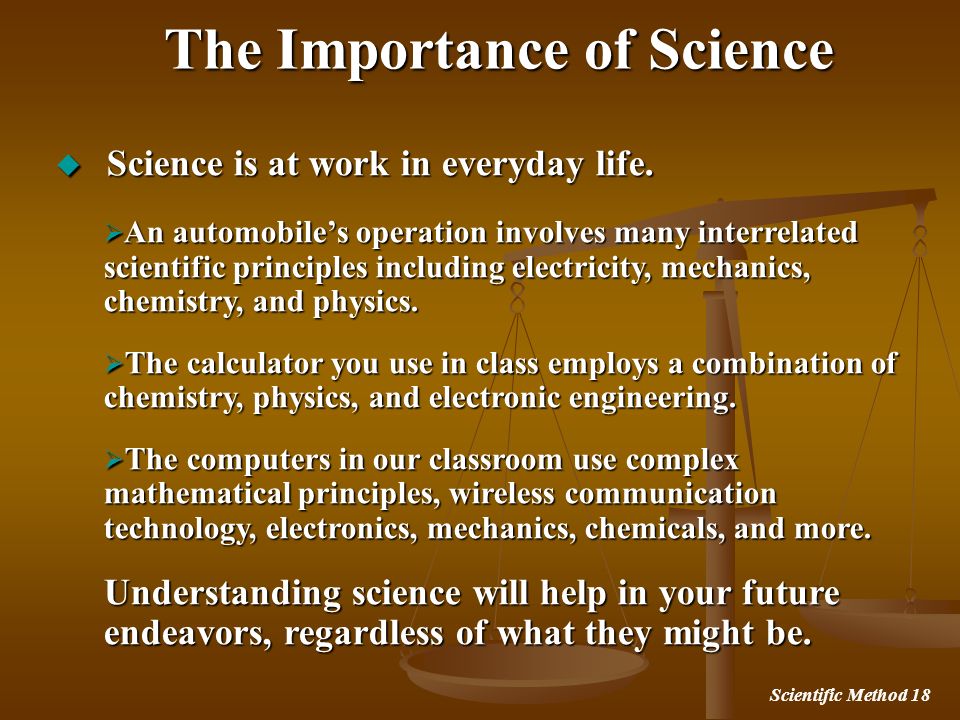
NIGERIA'S FUTURE AND SCIENCE AND TECHNOLOGY.
Nigeria as a country needs to develop her science and technology to pave way for the following development.
1. To be able to cope with her challenges in computer education.
2. Improved infrastructural development such as electricity water and road.
3. Cheap and affordable housing
4. Improved agricultural development to solve problems of hunger and ability to process and export to other countries.
5. Improved health care to have protected future leaders in the hands of deadly diseases.
6. Developing and encouraging investors in industrial sectors of the nation.
EVALUATION/ CLASSWORK :
1. Explain the importance of science and technology to man.
2. List five ways by which Nigeria's future can be secured by science and technology.
ASSIGNMENT(S):
List four ways by which traditional science and technology are not of importance nowadays.
further studies
https://www.slideshare.net/janettecbala ... evelopment
http://en.wikipedia.org/wiki/Science
http://en.wikipedia.org/wiki/Technology
TOPIC: Science And Technology In Development
CONTENT:
(a) Meaning of Science and Technology.
(b) The importance of science and technology.
Meaning of Science
Science is an organized body of knowledge which depends on theory. It can also be defined as the systematic study of facts through observation, experimentation and analysis then come to conclusion.
Science refers to knowledge that is gained by observing things in detail, testing and recording those observations. This method of observation is known as scientific method
Science deals with the pursuit of organized knowledge and this is based on facts.

Meaning of Technology
Technology is the application of scientific knowledge in the creation of things and solving of man’s problem in his environment. Technology can also be defined as the use of hand and brain to create things to solve man’s problem. Technology has helps man improve his life in all aspect e.g. in areas of transport, medicine, shelter, foods, clothing etc.
Technology is the use of organized knowledge to solve practical problems. Also technology uses scientific principles to make tools and machines.


Shanghai Science And Technology Museum
The Importance Of Science And Technology
The importance of science and technology to man cannot be overemphasized. The following are some of the importance of science and technology to man and the society at large.
1. Improved Health Care: The knowledge of science and technology have led to the manufacture of different drugs, hospital equipment and the training of medical personnel who work in hospitals.
2. It Led To Improved Transportation: The developments of science and technology have resulted in the improvement of transportation network as well as the different means of transport. Good roads, railways line, airports etc now link different parts of the world.
3. Improved Communication Network: Science and technology have improved the process of communication tremendously. The world is now a global village because of the speed and ease with which information can be passed.
4. Improved Agricultural Practices and Food Production: Science and technology have led to improved agricultural practice which in turn has brought about increased food production and preservation techniques.
5. Advancement Of The Entertainment Industry: Science and technology has brought about a great improvement in the entertainment industry. Better equipment for production of music and films are now available.
Evaluation:
1. What is science?
2. Define technology.
3. Mention four importance of science and technology.
READING ASSIGNMENT: - Read chapter 15 of Solakat Social studies for Junior Secondary School Volume two by A. Oluwasola Oyewole pages 55-60
ASSIGNMENT
OBJECTIVE QUESTIONS
1. …….. is the systematic study of facts through observation.
a. Technology b. Communication c. Science
2. ……… can be defined as the use of brain to create things to solve man’s problem.
a. Technology b. Communication c. Science
3. Better equipment for production of …….. and……… are now available in entertainment industry. a. Food and water b. Telephone and computer c. Music and films.
4. Science and technology have led to improved ………..practice which in turn has brought about increased food production and preservation techniques. a. Educational b. Communication c. Agricultural
5. The world is now a global village because of the speed and ease with which information can be passed. True or False
THEORY
1. What is science?
2. Define technology.
3. Mention four importance of science and technology.
LESSON 7
SPECIFIC TOPIC: ESSENTIAL METHODS IN SCIENCE.
REFERENCE BOOKS: Social Studies for Nigerian JSS Book 1, by Remi E. Aiyede Et al. Basic Social Studies For Nigeria Secondary Schools by Anikpo et al.
Simplified Social Studies for JSS by Ogunwale A.
PERFORMANCE OBJECTIVES: At the end of the lesson, the students should be able to:
1. explain the essential methods in science.
ESSENTIAL ASPECTS OF SCIENCE.
The following are the essential aspects of science:
1. Definition: This is using the proper language to clearly explain terms.
2. Observation: This makes gathering of information and data possible in science.
3. Experimentation: This is testing the hypothesis when gathering the required data.
4. Analysis: This is a thorough and careful study undertaking to confirm the observations.
ESSENTIAL METHODS IN SCIENCE.
This is the guide through which scientists carry out their research.
1. Definition/Statement of the problem.
2. Formulation of hypothesis.
3. Testing of hypothesis.
4. Observation of experiment.
5. Analysis.
6. Formulation of a theory.
7. Generalization.

EVALUATION/ CLASSWORK:
1. What is science and technology?
2. List the essentials of science you know.
LESSON 8
MAIN TOPIC: SCIENCE AND TECHNOLOGY.
SPECIFIC TOPIC: IMPORTANCE OF SCIENCE AND TECHNOLOGY.
REFERENCE BOOKS: Social Studies for Nigerian JSS Book 2, by Remi E. Aiyede Et al. Basic Social Studies For Nigeria Secondary Schools by Anikpo et al.
Simplified Social Studies for JSS by Ogunwale A.
PERFORMANCE OBJECTIVES: At the end of the lesson, the students should be able to:
1. discuss the importance of science and technology.
2. list Nigeria>s future needs in science and technology.
CONTENTS:
IMPORTANCE OF SCIENCE AND TECHNOLOGY.
1. Improved health care.
2. Improved food production through the use of high breed seedlings and fertilizers.
3. Improved transportation services i.e. faster and more comfortable.
4. Improved means of communication.
5. Transfer of technology
6. Release from superstitions e.g. on witch crafts, abiku and other forms of beliefs.
7. Improved standard of living, such as provision of potable water, electricity and tarred roads.
8. Creation of more jobs through location of industries in an area.

NIGERIA'S FUTURE AND SCIENCE AND TECHNOLOGY.
Nigeria as a country needs to develop her science and technology to pave way for the following development.
1. To be able to cope with her challenges in computer education.
2. Improved infrastructural development such as electricity water and road.
3. Cheap and affordable housing
4. Improved agricultural development to solve problems of hunger and ability to process and export to other countries.
5. Improved health care to have protected future leaders in the hands of deadly diseases.
6. Developing and encouraging investors in industrial sectors of the nation.
EVALUATION/ CLASSWORK :
1. Explain the importance of science and technology to man.
2. List five ways by which Nigeria's future can be secured by science and technology.
ASSIGNMENT(S):
List four ways by which traditional science and technology are not of importance nowadays.
further studies
https://www.slideshare.net/janettecbala ... evelopment
http://en.wikipedia.org/wiki/Science
http://en.wikipedia.org/wiki/Technology
WEEK 4
LESSON 9
SPECIFIC TOPIC: SCIENCE AND TECHNOLOGY IN TRADITIONAL SOCIETY.
REFERENCE BOOKS: Social Studies for Nigerian JSS Book 1, by Remi E. Aiyede Et al. Basic Social Studies For Nigeria Secondary Schools by Anikpo et al.
Simplified Social Studies for JSS by Ogunwale A.
PERFORMANCE OBJECTIVES: At the end of the lesson, the students should be able to:
1. list the features of traditional science and technology.
2. discuss the advantages of science and technology.
CONTENTS:
SCIENCE AND TECHNOLOGY IN TRADITIONAL SOCIETY.
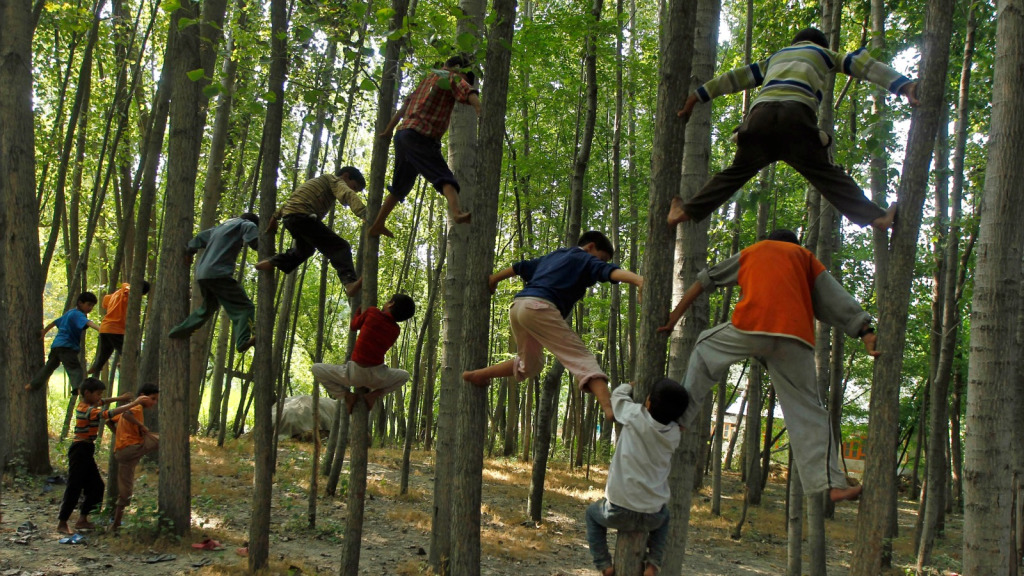
Before the coming of the Europeans science and technology are considered as magic with no specific explanations.
Man is able to make simple implements to farm such as hoes, cutlasses and diggers.
Man is able to identify food crops in their different zones
Transportation system was by crude means such as human portages, the use of animals and by use of canoe
Food preservation was by drying in sun.
Messages were sent across by the use of town criers and sending of items as signs.
Health care is left in the hands of herbalists and witch doctors.
Counting and means of exchange were done in crude ways such as the use of cowries.
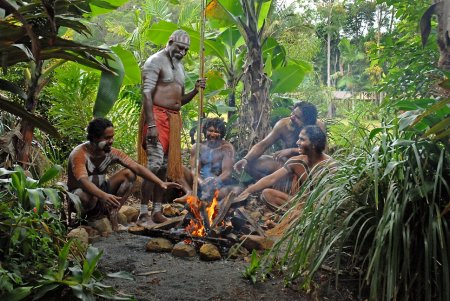
ADVANTAGES OF SCIENCE AND TECHNOLOGY.
1. Man's work is made easier.
2. It makes life more comfortable.
3. It makes communication across the world easier and faster.
4. Transportation is faster and more comfortable.
5. It creates more job opportunities to school leavers.
6. It has led to increase yield in agriculture due to improved seedlings.
7. It has improved the quality of our daily needs.
8. It has created a lot of improvement in health sectors and reduction in the effects of killer diseases
EVALUATION/ CLASSWORK:
1. List four features of traditional science and technology.
2. Explain the advantages of science and technology to man.
HOME WORK/ ASSIGNMENT
List five factors which you think is hindering science and technology in Nigeria.
Further Studies
https://www.slideshare.net/napcentral/i ... s-64039715
practice test
http://www.sciencekids.co.nz/quizzes/technology.html
http://www.pewresearch.org/quiz/science-knowledge/
LESSON 10
TOPIC: Modern Science And Technology And Societal Development
CONTENT:
(a) Types of traditional science and technology
(b) Some traditional science and technologies influenced by modernization
(c) Influence of science and technology (modern and traditional)
on societal development.
(d) Disadvantage of Science and Technology
Types Of Traditional Science And Technology
From ancient times man has been experimenting a lot of things that affect him in the society. He has been trying to find solutions his problems. Some of the most striking aspects of traditional science and technology in Nigeria are as follows:
1. Traditional Medicine: Ancient people were able to identify herbs, free barks, roots etc that cured so many diseases. They also had means of putting broken bones together.
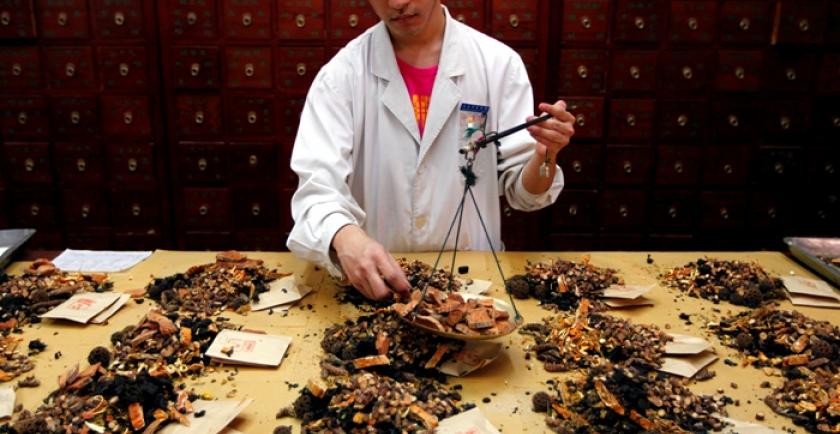
2. Black-smiting: They were able to produce farm implements, hunting and weapons of warfare with iron and stone.
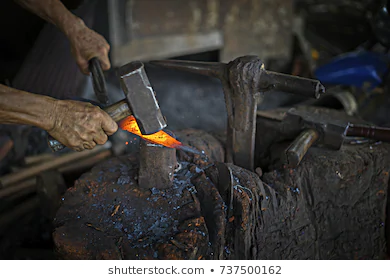
3. Art works: Traditional science and technology produced different bronze casting works, carving of wood and Ivory as well as the making of beads and glass.
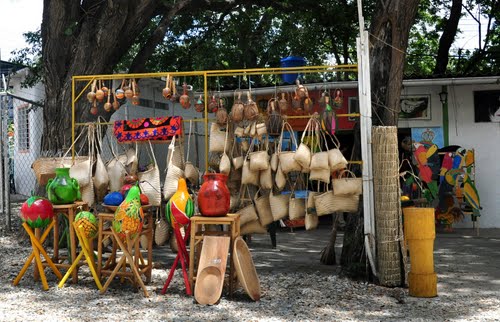
4. Food Preservation: Traditional science and technology had ways of preservation by smoking, salting and boiling.
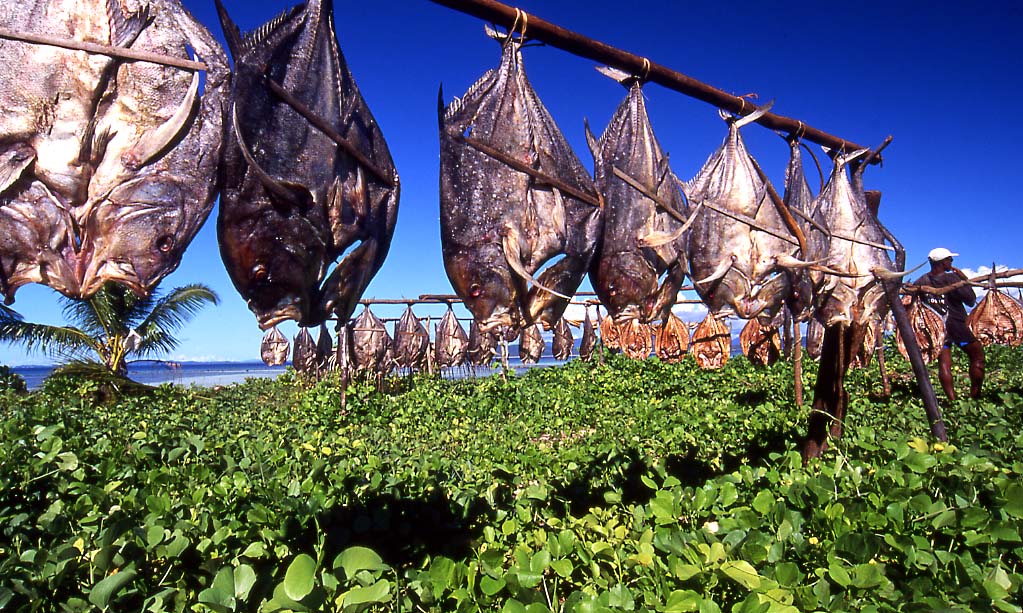
5. Pottery Making: They produce a wide variety of beautiful pot, Jars, Vesseletc. from clay.
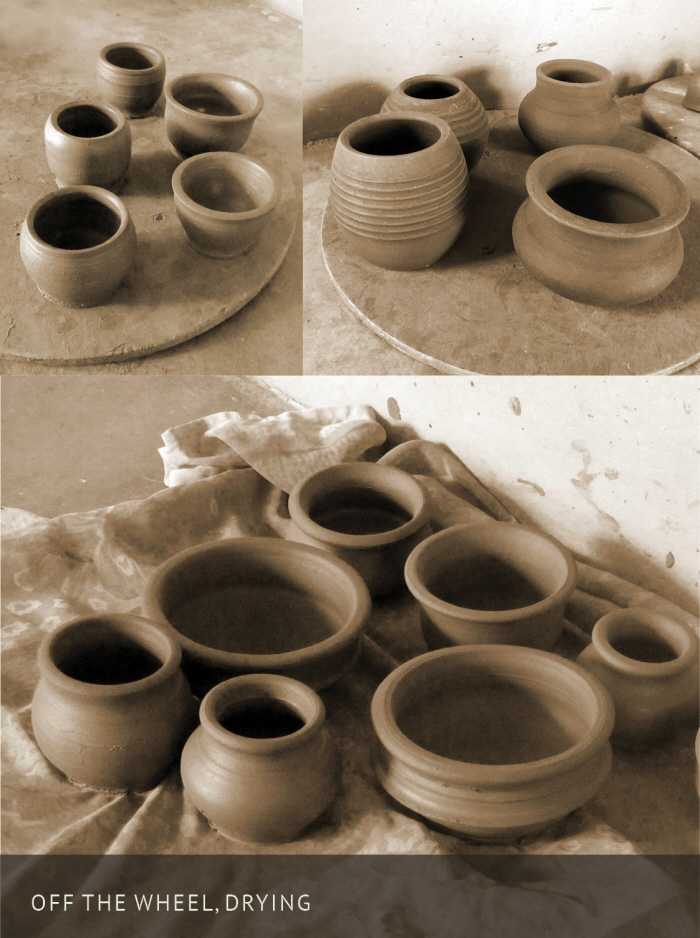
6. Clothing Dyeing: They had a way of dying clothes with the help of local dyes e.g. from can wood dye.
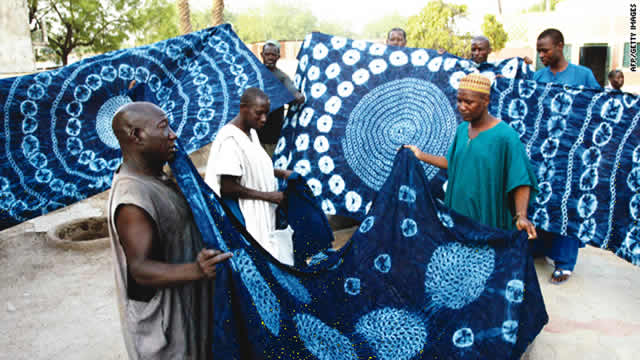
7. Soap Making: They produced their soap from palm oil, plantain stem and some other additives.
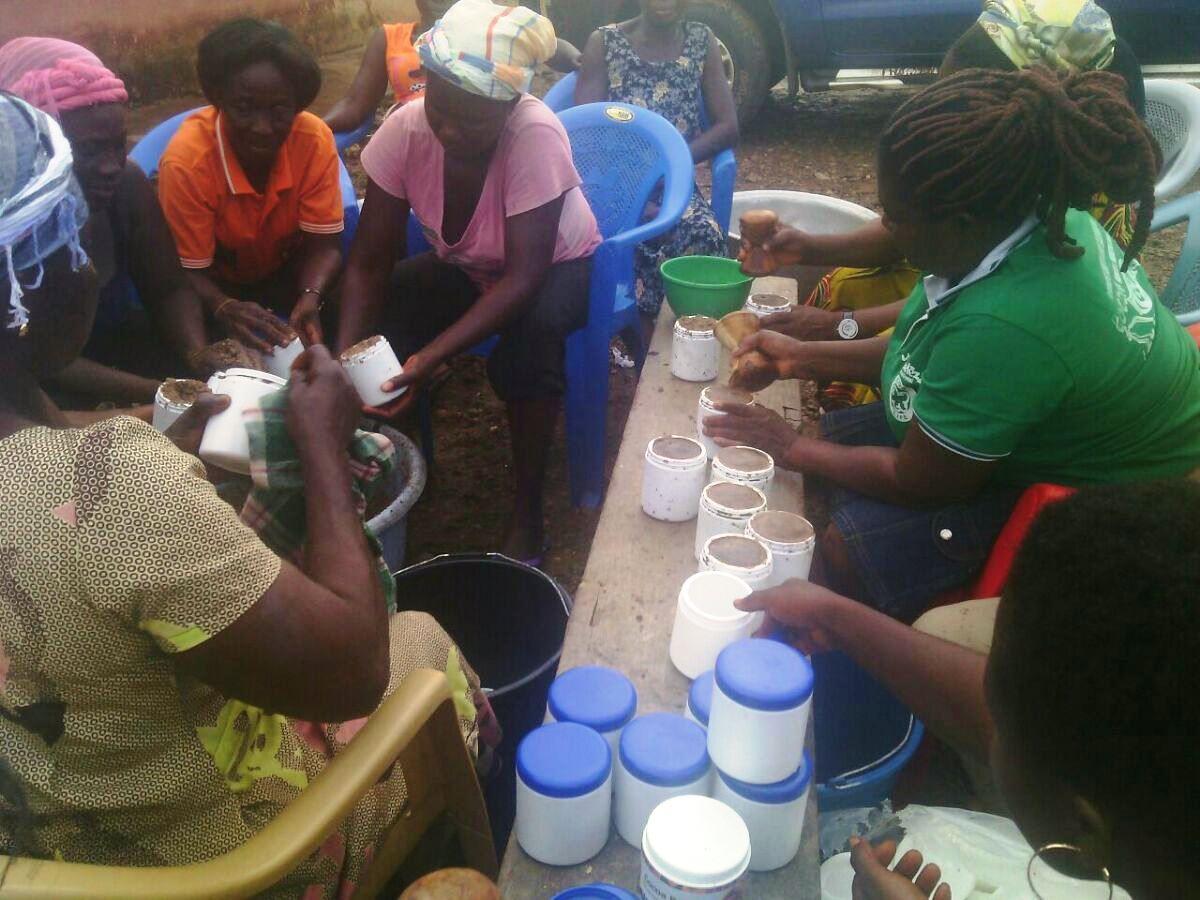
Some Traditional Science And Technologies Influence By Modernization
1. Musical Instrument: Apart from the introduction of modern musical instruments such as guitar, piano, etc, traditional instruments have been modernized and modern gadgets such as microphone, loudspeaker are used to aid their efficiency.
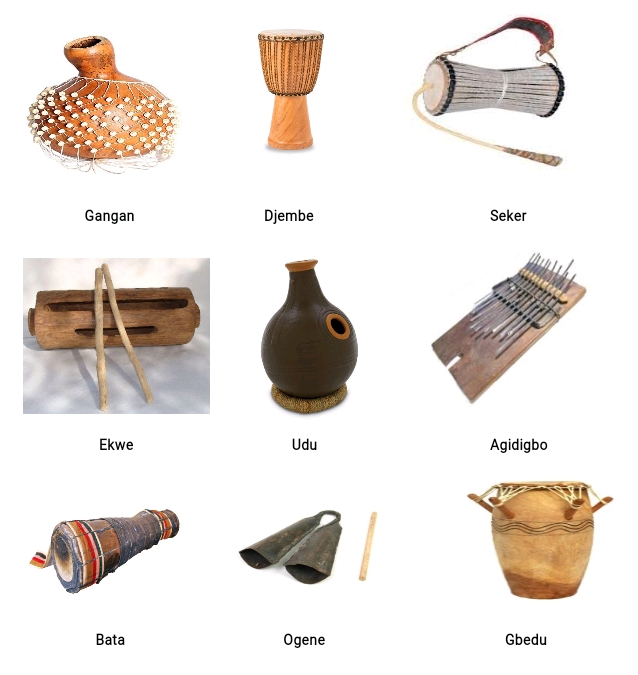
Musical instruments used by the Yoruba
2. Transportation: Trekking, use of beast of burden are no longer fashionable as modern form of transportation has taken over.

3. Cooking Utensils: Traditional utensils such as clay pot, grinding stone, etc have been replaced by modern one.

4. Herbal Medicine: This is now being packaged in a modern way with prescribed dosage.

Influence Of Science And Technology(Modern and Traditional) On Societal Development
1. Agriculture: Agricultural practices have been greatly influence by modern science and technology. The use of traditional farming implement like hoes, cutlass, diggers, go-to-hell etc. have been replaced by modern farming equipment like tractors, harvesters etc. High yielding seeds have been developed to boost production.
2. Construction: The former use of mud, wood and thatched roofs for house construction has been replaced by modern building equipment like concrete blocks, iron rods, corrugated roofing sheets etc.
3. Transportation: Modern science and technology has influenced transportation greatly. We now have faster and more comfortable means of transportation. Planes, motor vehicles and ships have replaced the
4. Medicine: Modern science and technology has influenced medical practice in a lot of ways. Better drugs hospital equipment have been developed.
5. Security: Security of lives and properties is greatly being enhanced by science and technology. Security officers now use bullet proof. Fire fighters equipment is used to fight fire outbreaks and Close Circuit Television (CCTV) is used for the detection of crimes within organizations.
Disadvantage Of Science And Technology
The following are some of the bad side effects of modern science and technology:
1. It has led to the destruction of the ozone layer of the atmosphere. This is due to emission of bad gases.
2. Modern science and technology has increased crime rate. The current use of sophisticated weapons has made it easier to commit crime.
3. It has resulted in the pollution of the environment (land, air and water).
4. Lives and properties are destroyed through involvement in various types of accidents.
5. It has made it easy for man to deplete the natural resources in the environment.
https://drive.google.com/file/d/19FvWy6 ... sp=sharing
Evaluation:
1. State four types of traditional science and technology.
2. Mention some ways by which some traditional science and technology had being influenced by modernization.
3. State three ways through which modern science and technology has influenced societal development.
4. Mention some disadvantages of modern science and technology.
READING ASSIGNMENT: - Read chapter 15 of Solakat Social studies for Junior Secondary School Volume two by A. Oluwasola Oyewole pages 55-60
ASSIGNMENT
OBJECTIVE QUESTIONS:
1. The musical instruments above are used for music by ……… people.
a. Edo b. Yoruba c. Lgbo
2. The most modern means of communication is ……… a. e-mail b. satellite c. telex
3. From ancient times man has been experimenting a lot of things that affect him in the society. True or False
4. One of the following is not the types of traditional science and technology. a. Black-smitingb. Pottery Making c. Computer
5. Some traditional science And technologies influence by modernization include the following except one. a. Cooking utensils b. Environment pollution c. Herbal medicine
THEORY
1. State four types of traditional science and technology.
2. Mention some ways by which some traditional science and technology had being influenced by modernization.
3. State three ways through which modern science and technology has influenced societal development.
4. Mention some disadvantages of modern science and technology.
SPECIFIC TOPIC: SCIENCE AND TECHNOLOGY IN TRADITIONAL SOCIETY.
REFERENCE BOOKS: Social Studies for Nigerian JSS Book 1, by Remi E. Aiyede Et al. Basic Social Studies For Nigeria Secondary Schools by Anikpo et al.
Simplified Social Studies for JSS by Ogunwale A.
PERFORMANCE OBJECTIVES: At the end of the lesson, the students should be able to:
1. list the features of traditional science and technology.
2. discuss the advantages of science and technology.
CONTENTS:
SCIENCE AND TECHNOLOGY IN TRADITIONAL SOCIETY.

Before the coming of the Europeans science and technology are considered as magic with no specific explanations.
Man is able to make simple implements to farm such as hoes, cutlasses and diggers.
Man is able to identify food crops in their different zones
Transportation system was by crude means such as human portages, the use of animals and by use of canoe
Food preservation was by drying in sun.
Messages were sent across by the use of town criers and sending of items as signs.
Health care is left in the hands of herbalists and witch doctors.
Counting and means of exchange were done in crude ways such as the use of cowries.

ADVANTAGES OF SCIENCE AND TECHNOLOGY.
1. Man's work is made easier.
2. It makes life more comfortable.
3. It makes communication across the world easier and faster.
4. Transportation is faster and more comfortable.
5. It creates more job opportunities to school leavers.
6. It has led to increase yield in agriculture due to improved seedlings.
7. It has improved the quality of our daily needs.
8. It has created a lot of improvement in health sectors and reduction in the effects of killer diseases
EVALUATION/ CLASSWORK:
1. List four features of traditional science and technology.
2. Explain the advantages of science and technology to man.
HOME WORK/ ASSIGNMENT
List five factors which you think is hindering science and technology in Nigeria.
Further Studies
https://www.slideshare.net/napcentral/i ... s-64039715
practice test
http://www.sciencekids.co.nz/quizzes/technology.html
http://www.pewresearch.org/quiz/science-knowledge/
LESSON 10
TOPIC: Modern Science And Technology And Societal Development
CONTENT:
(a) Types of traditional science and technology
(b) Some traditional science and technologies influenced by modernization
(c) Influence of science and technology (modern and traditional)
on societal development.
(d) Disadvantage of Science and Technology
Types Of Traditional Science And Technology
From ancient times man has been experimenting a lot of things that affect him in the society. He has been trying to find solutions his problems. Some of the most striking aspects of traditional science and technology in Nigeria are as follows:
1. Traditional Medicine: Ancient people were able to identify herbs, free barks, roots etc that cured so many diseases. They also had means of putting broken bones together.

2. Black-smiting: They were able to produce farm implements, hunting and weapons of warfare with iron and stone.

3. Art works: Traditional science and technology produced different bronze casting works, carving of wood and Ivory as well as the making of beads and glass.

4. Food Preservation: Traditional science and technology had ways of preservation by smoking, salting and boiling.

5. Pottery Making: They produce a wide variety of beautiful pot, Jars, Vesseletc. from clay.

6. Clothing Dyeing: They had a way of dying clothes with the help of local dyes e.g. from can wood dye.

7. Soap Making: They produced their soap from palm oil, plantain stem and some other additives.

Some Traditional Science And Technologies Influence By Modernization
1. Musical Instrument: Apart from the introduction of modern musical instruments such as guitar, piano, etc, traditional instruments have been modernized and modern gadgets such as microphone, loudspeaker are used to aid their efficiency.

Musical instruments used by the Yoruba
2. Transportation: Trekking, use of beast of burden are no longer fashionable as modern form of transportation has taken over.

3. Cooking Utensils: Traditional utensils such as clay pot, grinding stone, etc have been replaced by modern one.

4. Herbal Medicine: This is now being packaged in a modern way with prescribed dosage.

Influence Of Science And Technology(Modern and Traditional) On Societal Development
1. Agriculture: Agricultural practices have been greatly influence by modern science and technology. The use of traditional farming implement like hoes, cutlass, diggers, go-to-hell etc. have been replaced by modern farming equipment like tractors, harvesters etc. High yielding seeds have been developed to boost production.
2. Construction: The former use of mud, wood and thatched roofs for house construction has been replaced by modern building equipment like concrete blocks, iron rods, corrugated roofing sheets etc.
3. Transportation: Modern science and technology has influenced transportation greatly. We now have faster and more comfortable means of transportation. Planes, motor vehicles and ships have replaced the
4. Medicine: Modern science and technology has influenced medical practice in a lot of ways. Better drugs hospital equipment have been developed.
5. Security: Security of lives and properties is greatly being enhanced by science and technology. Security officers now use bullet proof. Fire fighters equipment is used to fight fire outbreaks and Close Circuit Television (CCTV) is used for the detection of crimes within organizations.
Disadvantage Of Science And Technology
The following are some of the bad side effects of modern science and technology:
1. It has led to the destruction of the ozone layer of the atmosphere. This is due to emission of bad gases.
2. Modern science and technology has increased crime rate. The current use of sophisticated weapons has made it easier to commit crime.
3. It has resulted in the pollution of the environment (land, air and water).
4. Lives and properties are destroyed through involvement in various types of accidents.
5. It has made it easy for man to deplete the natural resources in the environment.
https://drive.google.com/file/d/19FvWy6 ... sp=sharing
Evaluation:
1. State four types of traditional science and technology.
2. Mention some ways by which some traditional science and technology had being influenced by modernization.
3. State three ways through which modern science and technology has influenced societal development.
4. Mention some disadvantages of modern science and technology.
READING ASSIGNMENT: - Read chapter 15 of Solakat Social studies for Junior Secondary School Volume two by A. Oluwasola Oyewole pages 55-60
ASSIGNMENT
OBJECTIVE QUESTIONS:
1. The musical instruments above are used for music by ……… people.
a. Edo b. Yoruba c. Lgbo
2. The most modern means of communication is ……… a. e-mail b. satellite c. telex
3. From ancient times man has been experimenting a lot of things that affect him in the society. True or False
4. One of the following is not the types of traditional science and technology. a. Black-smitingb. Pottery Making c. Computer
5. Some traditional science And technologies influence by modernization include the following except one. a. Cooking utensils b. Environment pollution c. Herbal medicine
THEORY
1. State four types of traditional science and technology.
2. Mention some ways by which some traditional science and technology had being influenced by modernization.
3. State three ways through which modern science and technology has influenced societal development.
4. Mention some disadvantages of modern science and technology.
WEEK 5
LESSON 11
SPECIFIC TOPIC: EVOLUTION THEORY.
REFERENCE BOOK: Social Studies for Nigerian JSS Book 1, by Remi E. Aiyede Et al. Basic Social Studies for Nigeria Secondary Schools by Anikpo et al.
Simplified Social Studies for JSS by Ogunwale A.
PERFORMANCE OBJECTIVES: At the end of the lesson, the students should be able to:
1. explain the meaning of evolution.
2.list the stages of evolution of man.
CONTENTS:
EVOLUTION.
The scientific explanation of the origin of human beings can be traced to the EVOLUTION evidence. Evolution is the development from simple to complex living forms. This means that man evolve from single/ simple cell to multi cellular organism.
With this biological equation, man shared many characteristics with some of these other organisms e.g. man and gorilla and chimpanzee.
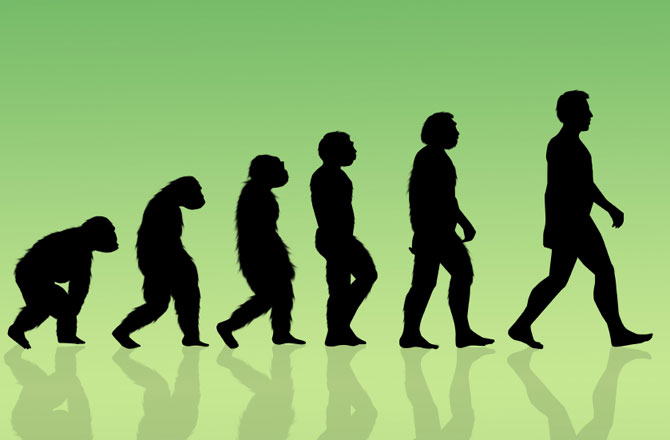
The stages of evolution of man are as follow:
1. A human being is an animal belonging to the animal kingdom.
2. That human beings belong to multi cellular animal kingdom and not one called animals.
3. That man belongs to the vertebrate where the nervous systems run.
4. Man is also a mammal among the vertebrates. Mammals also have glands to suckle their young ones.
5. Human beings belong to the primate in order, so also
6. Man also belongs to the <Homo> group i.e. Homosapiens.
Through this evolution theory, one can see that human beings have passed through million of years before evolving to the present stage. With the development therefore, man has developed a well versed brain and nervous system than any other. This theory is postulated by CHARLES DARWIN.
EVIDENCE OF FIRST MAN EVOLVING FROM AFRICA.
L.S.D. Leakey while working in Kenya as an archeologist discovered the oldest fossil ever ion the earth, meaning that the earliest man evolved from African about forty to fifty million years ago. This period is referred to in geological time table as OLIGOCENE period.
Leakey called the fossil found as KENYALOPITUS WICKERI. This was in the year 1963, and said the age of the fossil is about twelve to fifteen million years.


EVALUATION:
1. What is evolution?
2. explain the stages of evolution of man.
HOME WORK/ ASSIGNMENT:
Write short note on Charles Darwin.
further studies
https://www.scribd.com/document/4954908 ... ion-of-Man
LESSON 12
SPECIFIC TOPIC: UNIQUENESS OF MAN
REFERENCE BOOK MATERIALS: Simplified Social Studies For JSS, by Ogunwale A., Basic Social Studies For Nigeria Secondary Schools by Anikpo et.al.
PERFORMANCE OBJECTIVES: At the end of the lesson, the students should be able to:
1. discuss the uniqueness of man.
2. explain the universality of man.
CONTENTS:
UNIQUENESS OF MAN.
Human beings have some characteristics that make them different from other animals, these are:
1. Larger and more complex brain than any other animals.
2. Man stands erect which no other animals do.
3. The pelvic is broader, though shallower than that of other animals.
4. The hands of man are not fully meant to support walking but to assist in picking things or handle things.
5. Man cannot hear some of the sound waves which a dog or mouse can hear.
6. Only man is the animal with culture in complex form.
7. Human beings adapt to and control any environment they are found.
8. Human beings develop tools for their use either to provide food or shelter.
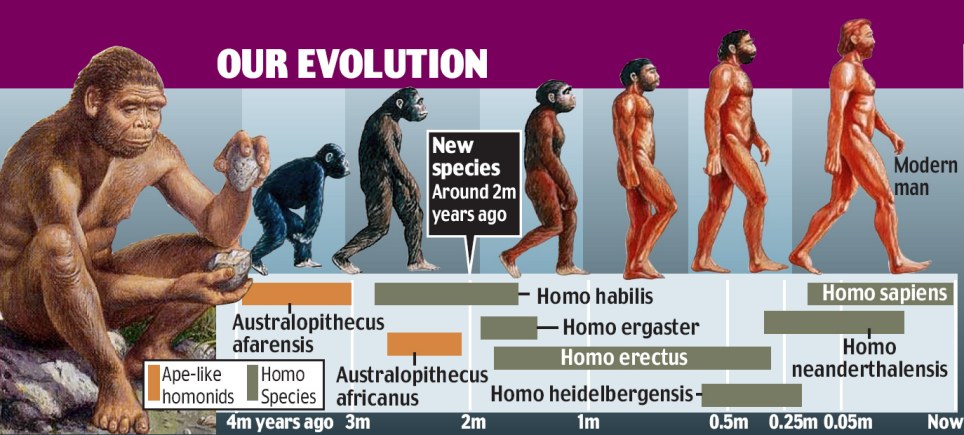
UNIVERSALITY OF MAN
Man is found everywhere on the planet called earth, this is because man can adapt to any environment they found themselves.
The environment has had a lot of effects on man also in terms of culture, behavior, physique. Man is the only animal on earth that has different types of culture no matter how close the tribes may be to each other, their culture is always different.
In an environment or area no matter how small it may be no two individuals are exactly the same. Although, they may have many characteristics in common.

EVALUATION/ CLASSWORK::
1. Explain in full the uniqueness of man.
2. List some facts that made you believe in universality of man.
further studies
https://www.slideshare.net/zee4love/man ... cial-being
http://www.theosociety.org/pasadena/for ... of-man.htm
http://www.scienceandapologetics.org/engl/robinson.html
LESSON 13
SPECIFIC TOPIC: RACES.
REFERENCE BOOKS: Social Studies for Nigerian JSS Book 1, by Remi E. Aiyede Et al. Basic Social Studies For Nigeria Secondary Schools by Anikpo et al.
Simplified Social Studies for JSS by Ogunwale A.
PERFORMANCE OBJECTIVES: At the end of the lesson, the students should be able to:
1. define races.
2. list and explain the classification of races.
ENTRY BEHAVIOUR:
CONTENTS:
RACES.
A race is a group of people that have common origin, similar physical appearance e.g. skin colour, facial details, shape of head, body and other similar peculiarities. Races can also be referred to as biological divisions of human beings with common, well marked physical characteristics.
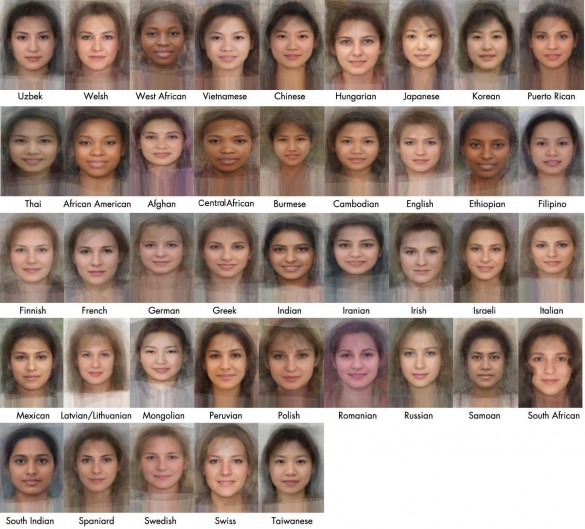
CLASSIFICATION OF RACES.
Certain factors are use to classify races in the world, this include language, religion and other cultural peculiarities. It also uses skin, colour, hair and other major physical features. The major races are:
1. BLACK: A person having origins in any of the black racial groups found in Africa and other areas where blacks are found.
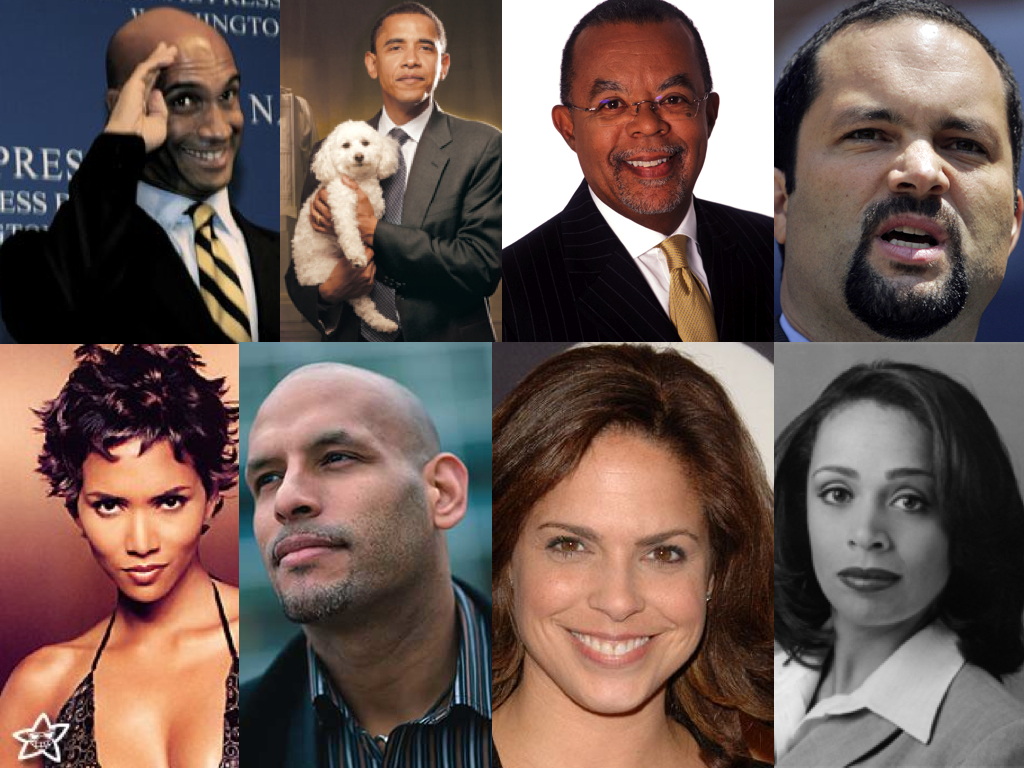
2. CAUCASOID. They are long-headed, wavy hair, brown to light complexion, narrow nosed. These people include the long headed people of Europe, North Africa, Western and Southern Asia.

3. AUSTRALASIAN. They have wooly hair, dark complexion, long headed and flat nosed. They are original inhabitant of Australia and Southern Asia.
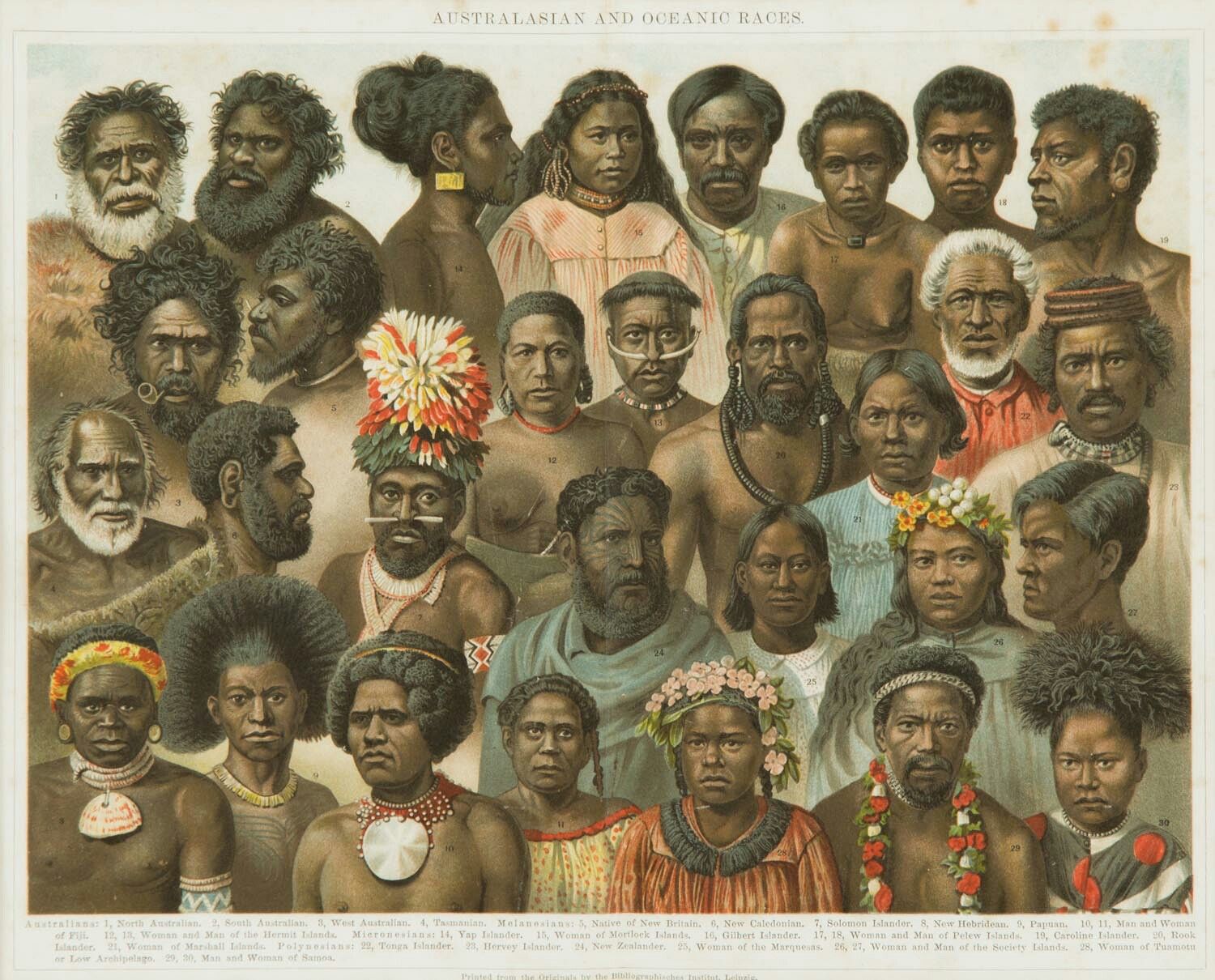
4. MONGOLOID. They are broad headed, have straight hair, yellow or red complexion, noses of various types. They are the Chinese and the Americans.
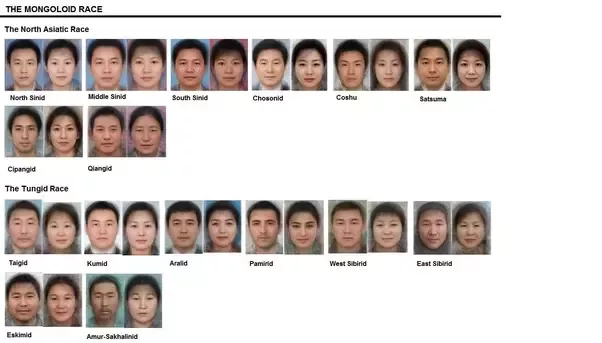
RACISM.
This is the belief that one race is superior to another race. When a race is discriminated against and subjected to torture, we are talking about racism. A racist is biased and prejudiced. A racist discriminates against anyone who has a different skin colour or speaks a different language apart from his own.
Racism led to the institutionalization of apartheid in South Africa and introduced by whites in South Africa. This policy was shattered in 1991 with the release of Nelson Mandela from prison.
Racism is a product of prejudice, it is cruel and wicked and it is <crime against humanity>.

EVALUATION/CLASSWORK:
1. Define the term "race".
2. Explain briefly the classification of races in the world.
HOME WORK/ ASSIGNMENT:
Write short note on the following races: Amerindians, Micronesians, Melanesians, Pygmies, Hottentots, The Aborigines and the Eskimos.
practice quiz
http://anthro.palomar.edu/ethnicity/qui ... hquiz1.htm
http://www.funtrivia.com/playquiz/quiz3 ... 2a850.html
http://www.biologycorner.com/quiz/qz_hu ... ution.html
SPECIFIC TOPIC: EVOLUTION THEORY.
REFERENCE BOOK: Social Studies for Nigerian JSS Book 1, by Remi E. Aiyede Et al. Basic Social Studies for Nigeria Secondary Schools by Anikpo et al.
Simplified Social Studies for JSS by Ogunwale A.
PERFORMANCE OBJECTIVES: At the end of the lesson, the students should be able to:
1. explain the meaning of evolution.
2.list the stages of evolution of man.
CONTENTS:
EVOLUTION.
The scientific explanation of the origin of human beings can be traced to the EVOLUTION evidence. Evolution is the development from simple to complex living forms. This means that man evolve from single/ simple cell to multi cellular organism.
With this biological equation, man shared many characteristics with some of these other organisms e.g. man and gorilla and chimpanzee.

The stages of evolution of man are as follow:
1. A human being is an animal belonging to the animal kingdom.
2. That human beings belong to multi cellular animal kingdom and not one called animals.
3. That man belongs to the vertebrate where the nervous systems run.
4. Man is also a mammal among the vertebrates. Mammals also have glands to suckle their young ones.
5. Human beings belong to the primate in order, so also
6. Man also belongs to the <Homo> group i.e. Homosapiens.
Through this evolution theory, one can see that human beings have passed through million of years before evolving to the present stage. With the development therefore, man has developed a well versed brain and nervous system than any other. This theory is postulated by CHARLES DARWIN.
EVIDENCE OF FIRST MAN EVOLVING FROM AFRICA.
L.S.D. Leakey while working in Kenya as an archeologist discovered the oldest fossil ever ion the earth, meaning that the earliest man evolved from African about forty to fifty million years ago. This period is referred to in geological time table as OLIGOCENE period.
Leakey called the fossil found as KENYALOPITUS WICKERI. This was in the year 1963, and said the age of the fossil is about twelve to fifteen million years.


EVALUATION:
1. What is evolution?
2. explain the stages of evolution of man.
HOME WORK/ ASSIGNMENT:
Write short note on Charles Darwin.
further studies
https://www.scribd.com/document/4954908 ... ion-of-Man
LESSON 12
SPECIFIC TOPIC: UNIQUENESS OF MAN
REFERENCE BOOK MATERIALS: Simplified Social Studies For JSS, by Ogunwale A., Basic Social Studies For Nigeria Secondary Schools by Anikpo et.al.
PERFORMANCE OBJECTIVES: At the end of the lesson, the students should be able to:
1. discuss the uniqueness of man.
2. explain the universality of man.
CONTENTS:
UNIQUENESS OF MAN.
Human beings have some characteristics that make them different from other animals, these are:
1. Larger and more complex brain than any other animals.
2. Man stands erect which no other animals do.
3. The pelvic is broader, though shallower than that of other animals.
4. The hands of man are not fully meant to support walking but to assist in picking things or handle things.
5. Man cannot hear some of the sound waves which a dog or mouse can hear.
6. Only man is the animal with culture in complex form.
7. Human beings adapt to and control any environment they are found.
8. Human beings develop tools for their use either to provide food or shelter.

UNIVERSALITY OF MAN
Man is found everywhere on the planet called earth, this is because man can adapt to any environment they found themselves.
The environment has had a lot of effects on man also in terms of culture, behavior, physique. Man is the only animal on earth that has different types of culture no matter how close the tribes may be to each other, their culture is always different.
In an environment or area no matter how small it may be no two individuals are exactly the same. Although, they may have many characteristics in common.

EVALUATION/ CLASSWORK::
1. Explain in full the uniqueness of man.
2. List some facts that made you believe in universality of man.
further studies
https://www.slideshare.net/zee4love/man ... cial-being
http://www.theosociety.org/pasadena/for ... of-man.htm
http://www.scienceandapologetics.org/engl/robinson.html
LESSON 13
SPECIFIC TOPIC: RACES.
REFERENCE BOOKS: Social Studies for Nigerian JSS Book 1, by Remi E. Aiyede Et al. Basic Social Studies For Nigeria Secondary Schools by Anikpo et al.
Simplified Social Studies for JSS by Ogunwale A.
PERFORMANCE OBJECTIVES: At the end of the lesson, the students should be able to:
1. define races.
2. list and explain the classification of races.
ENTRY BEHAVIOUR:
CONTENTS:
RACES.
A race is a group of people that have common origin, similar physical appearance e.g. skin colour, facial details, shape of head, body and other similar peculiarities. Races can also be referred to as biological divisions of human beings with common, well marked physical characteristics.

CLASSIFICATION OF RACES.
Certain factors are use to classify races in the world, this include language, religion and other cultural peculiarities. It also uses skin, colour, hair and other major physical features. The major races are:
1. BLACK: A person having origins in any of the black racial groups found in Africa and other areas where blacks are found.

2. CAUCASOID. They are long-headed, wavy hair, brown to light complexion, narrow nosed. These people include the long headed people of Europe, North Africa, Western and Southern Asia.

3. AUSTRALASIAN. They have wooly hair, dark complexion, long headed and flat nosed. They are original inhabitant of Australia and Southern Asia.

4. MONGOLOID. They are broad headed, have straight hair, yellow or red complexion, noses of various types. They are the Chinese and the Americans.

RACISM.
This is the belief that one race is superior to another race. When a race is discriminated against and subjected to torture, we are talking about racism. A racist is biased and prejudiced. A racist discriminates against anyone who has a different skin colour or speaks a different language apart from his own.
Racism led to the institutionalization of apartheid in South Africa and introduced by whites in South Africa. This policy was shattered in 1991 with the release of Nelson Mandela from prison.
Racism is a product of prejudice, it is cruel and wicked and it is <crime against humanity>.

EVALUATION/CLASSWORK:
1. Define the term "race".
2. Explain briefly the classification of races in the world.
HOME WORK/ ASSIGNMENT:
Write short note on the following races: Amerindians, Micronesians, Melanesians, Pygmies, Hottentots, The Aborigines and the Eskimos.
practice quiz
http://anthro.palomar.edu/ethnicity/qui ... hquiz1.htm
http://www.funtrivia.com/playquiz/quiz3 ... 2a850.html
http://www.biologycorner.com/quiz/qz_hu ... ution.html
WEEK 6
LESSON 14
TOPIC: Common Hair Styles:
CONTENT:
(a) Common hair styles for women and men in their locality
(b) Present day hairstyles for male and female
Meaning Of Hairstyle
Hairstyle is the way people beautify their hair, in the African culture hair beautification is very important. Both men and women beautify their hair in order to look good and attractive. In Nigeria hair styles can be grouped into four.
1. Cutting or barbing.
2. Weaving or braiding.
3. Plaiting with thread.
4. Perm or jerry curls.

Common Hair Styles For Women In Their Locality
Cutting Or Barbing
Some females still barb their hair, though hair barbing is common only among some little girls of school age. This is not saying that some adult females don’t cut their hair, a few still do. e.g. Afro, Punk, Low cut, Anita Baker, Go to school etc.

Weaving Or Braiding
This is one of the most common hair styles for women and girls. It is currently in vogue in Nigeria. Both young and old females see this hairstyle as fashionable. It lasts long after making it and it is easy to maintain. Weaving or braid can be patterned into various styles like All back, Dada or Dreadlocks, Braids, Shuku, Clapping, Monkey Tailing, Bob Marley, Twisting etc.
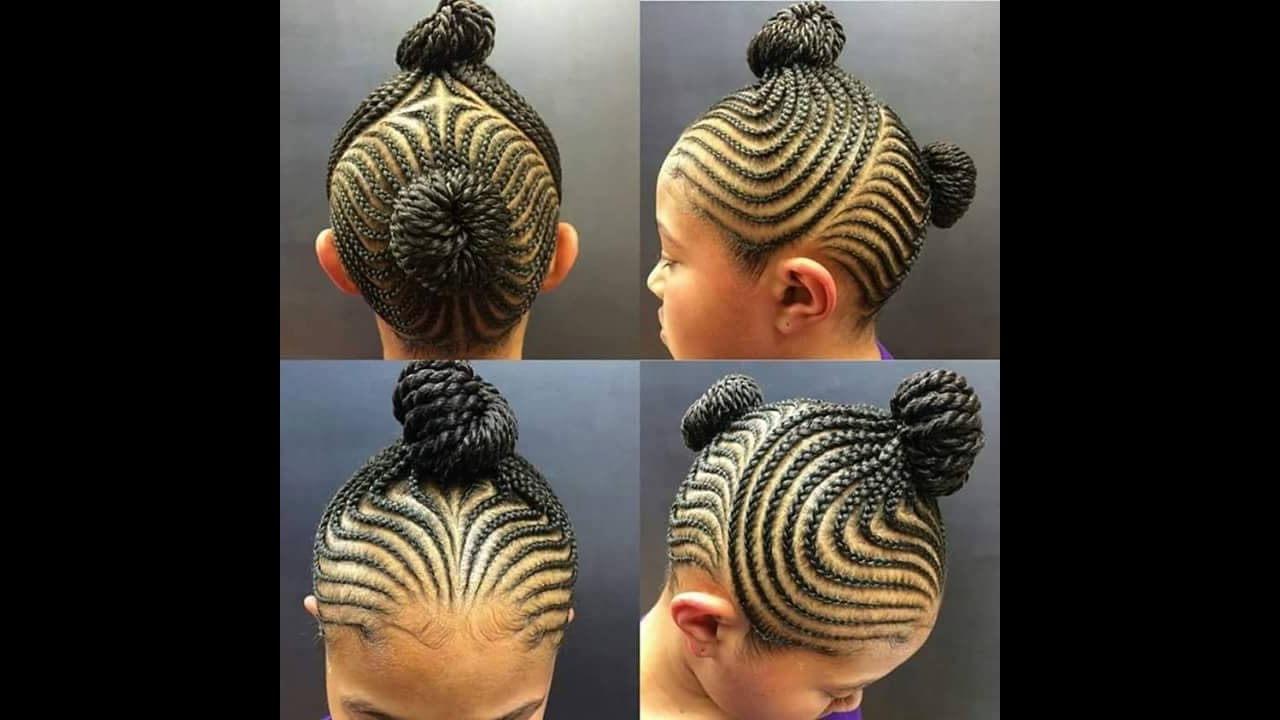
Plaiting With Thread
This hairstyle is common among females in the eastern and southern parts of the country. It is sometimes referred to as “Amaka”. Black cotton thread it tied or wound round the hair from root to the tip after it has be cut into various patterns. Styles done with thread or rubber strings include Go to school, Amaka, parking etc. This hair style is gradually fading off the hair do styles because modern women prefer other hair styles.

Perm Or Jerry Curls
This hair style was introduced to Nigerian women by Europeans. Perm is done with perm creams like relaxes or blow out creams, while Jerry curls is done with Jerry curls creams.

Evaluation:
1. What is hair style?
2. Mention the four group of Nigeria’s hair styles
3. List and explain briefly the common hairstyle for Nigeria women
LESSON 15
Common Hair Styles For Men In Their Locality
Cutting or Barbing
This is the most common hair style done by men in Nigeria. This style is done by both young and old men. Cutting or barbing can be done in barbing salons by hair barbers. Hair patterns like low cut, skill cut, punk, R. Kelly, Bobby Brown, Afro etc. are cut. The hair style that is in vogue for men is the skin cut. It makes a man look clean and younger.
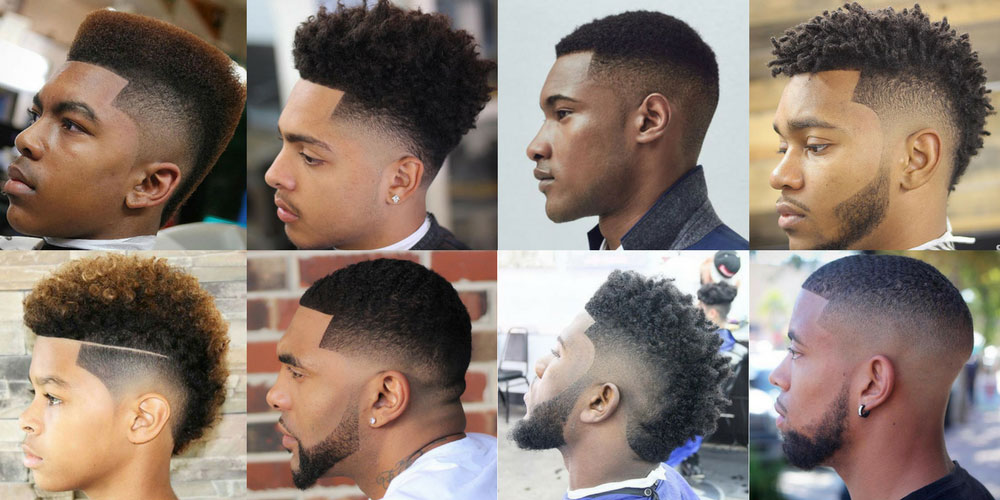
Weaving or Braiding
Weaving or braiding of hair was mainly done by both men and women from the north eastern part of the country. It is part of their culture for men to weave or braid hair. Men and boys do not weave or braid hair in the west, east, and southern parts of the country. It was regarded as a taboo for men from these parts of the country to weave or braid their hair. But hair weaving by men is associated with some professions e.g. footballers, musicians.
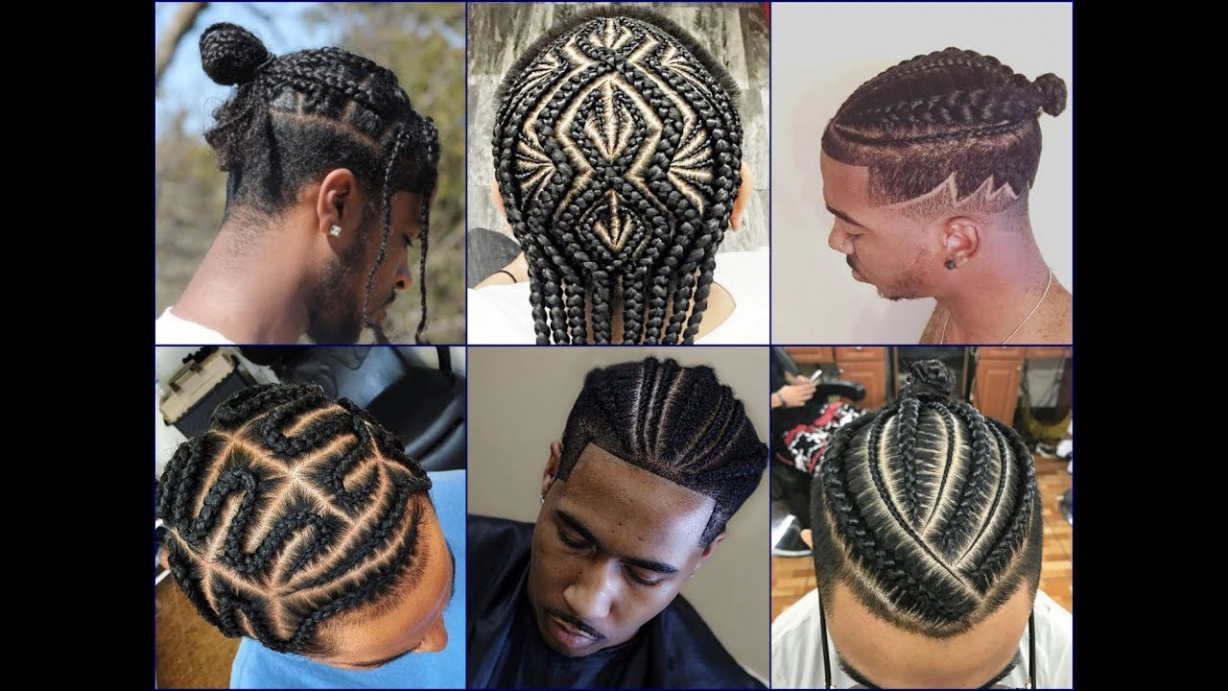
Perm or Jerry Curls
It is not in the Nigerian culture for men to perm or jerry curl their hair. Only a hand full of musicians, footballers and actors perm or jerry curl their hair.

Present Day Hairstyles For Male And Female
1. Afro.

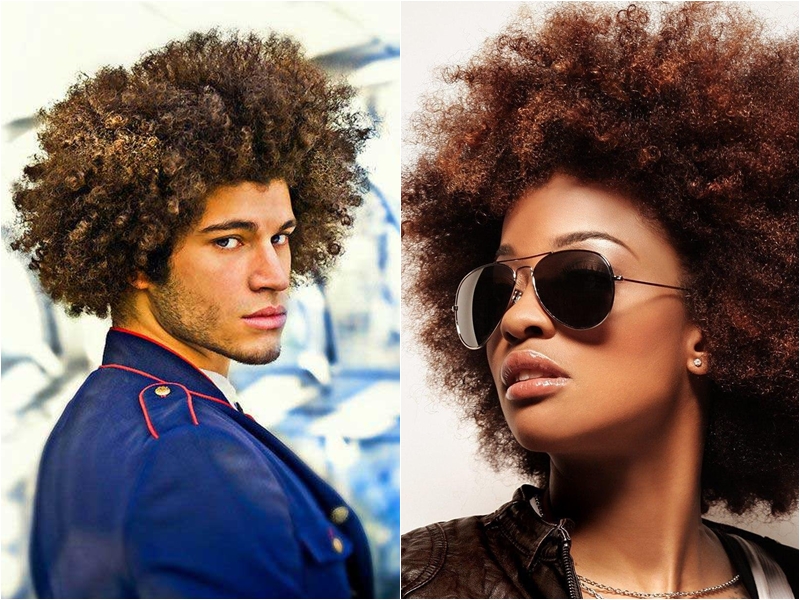
2. Skin cut.
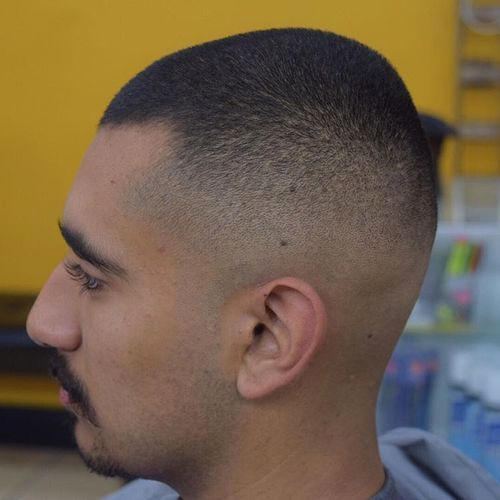
3. Weaving or braiding.

4. Perm


5. Jerry curl.


Evaluation:
1. List and explain briefly the common hairstyle for Nigeria men
READING ASSIGNMENT: Read chapter 11 of Solakat Social studies for Junior Secondary School Volume two by A. Oluwasola Oyewole pages 47-48
ASSIGNMENT
OBJECTIVE QUESTIONS:
1. ………. Is sometimes referred to as “Amaka. a. Plaiting With Thread b. Weaving Or Braiding c. Cutting Or Barbing.
2. It is not in the Nigerian culture for men to perm or jerry curl their hair. True or False.
3. The following hair style are done by men except one a. Low cut, skill cut, punk b. R. Kelly, Bobby Brown, Afro c. Plaiting With Thread.
4. ……….. hair style was introduced to Nigerian women by Europeans. a. Weaving Or Braiding b. Perm or Jerry curl c. Cutting Or Barbing
5. Braids, Shuku, Clapping, Monkey Tailing, Bob Marley, Twisting etc. are examples of a. Plaiting With Thread b. Weaving Or Braiding c. Cutting Or Barbing.
THEORY
1. What is hair style?
2. Mention the four group of Nigeria’s hair styles
3. List and explain briefly the common hairstyle for Nigeria women
TOPIC: Common Hair Styles:
CONTENT:
(a) Common hair styles for women and men in their locality
(b) Present day hairstyles for male and female
Meaning Of Hairstyle
Hairstyle is the way people beautify their hair, in the African culture hair beautification is very important. Both men and women beautify their hair in order to look good and attractive. In Nigeria hair styles can be grouped into four.
1. Cutting or barbing.
2. Weaving or braiding.
3. Plaiting with thread.
4. Perm or jerry curls.

Common Hair Styles For Women In Their Locality
Cutting Or Barbing
Some females still barb their hair, though hair barbing is common only among some little girls of school age. This is not saying that some adult females don’t cut their hair, a few still do. e.g. Afro, Punk, Low cut, Anita Baker, Go to school etc.

Weaving Or Braiding
This is one of the most common hair styles for women and girls. It is currently in vogue in Nigeria. Both young and old females see this hairstyle as fashionable. It lasts long after making it and it is easy to maintain. Weaving or braid can be patterned into various styles like All back, Dada or Dreadlocks, Braids, Shuku, Clapping, Monkey Tailing, Bob Marley, Twisting etc.

Plaiting With Thread
This hairstyle is common among females in the eastern and southern parts of the country. It is sometimes referred to as “Amaka”. Black cotton thread it tied or wound round the hair from root to the tip after it has be cut into various patterns. Styles done with thread or rubber strings include Go to school, Amaka, parking etc. This hair style is gradually fading off the hair do styles because modern women prefer other hair styles.

Perm Or Jerry Curls
This hair style was introduced to Nigerian women by Europeans. Perm is done with perm creams like relaxes or blow out creams, while Jerry curls is done with Jerry curls creams.

Evaluation:
1. What is hair style?
2. Mention the four group of Nigeria’s hair styles
3. List and explain briefly the common hairstyle for Nigeria women
LESSON 15
Common Hair Styles For Men In Their Locality
Cutting or Barbing
This is the most common hair style done by men in Nigeria. This style is done by both young and old men. Cutting or barbing can be done in barbing salons by hair barbers. Hair patterns like low cut, skill cut, punk, R. Kelly, Bobby Brown, Afro etc. are cut. The hair style that is in vogue for men is the skin cut. It makes a man look clean and younger.

Weaving or Braiding
Weaving or braiding of hair was mainly done by both men and women from the north eastern part of the country. It is part of their culture for men to weave or braid hair. Men and boys do not weave or braid hair in the west, east, and southern parts of the country. It was regarded as a taboo for men from these parts of the country to weave or braid their hair. But hair weaving by men is associated with some professions e.g. footballers, musicians.

Perm or Jerry Curls
It is not in the Nigerian culture for men to perm or jerry curl their hair. Only a hand full of musicians, footballers and actors perm or jerry curl their hair.

Present Day Hairstyles For Male And Female
1. Afro.


2. Skin cut.

3. Weaving or braiding.

4. Perm


5. Jerry curl.


Evaluation:
1. List and explain briefly the common hairstyle for Nigeria men
READING ASSIGNMENT: Read chapter 11 of Solakat Social studies for Junior Secondary School Volume two by A. Oluwasola Oyewole pages 47-48
ASSIGNMENT
OBJECTIVE QUESTIONS:
1. ………. Is sometimes referred to as “Amaka. a. Plaiting With Thread b. Weaving Or Braiding c. Cutting Or Barbing.
2. It is not in the Nigerian culture for men to perm or jerry curl their hair. True or False.
3. The following hair style are done by men except one a. Low cut, skill cut, punk b. R. Kelly, Bobby Brown, Afro c. Plaiting With Thread.
4. ……….. hair style was introduced to Nigerian women by Europeans. a. Weaving Or Braiding b. Perm or Jerry curl c. Cutting Or Barbing
5. Braids, Shuku, Clapping, Monkey Tailing, Bob Marley, Twisting etc. are examples of a. Plaiting With Thread b. Weaving Or Braiding c. Cutting Or Barbing.
THEORY
1. What is hair style?
2. Mention the four group of Nigeria’s hair styles
3. List and explain briefly the common hairstyle for Nigeria women
WEEK 7
LESSON 16
TOPIC: Adornments:
CONTENT:
(a) Meaning of adornments
(b) Adornments commonly used in Nigerian communities (beads, chains, rings, etc).
Meaning Of Adornments
Adornment can be simply defined as an act of decorating things or the objects you use to decorate such things. They are cultural items used by people to beautify themselves. From ancient times both men and women have tried to outwit their mates by using different things to adorn themselves.

Adornments Commonly Used In Nigerian Communities
1.Beads: Beads are cultural items worn by both men and women in many communities in Nigeria. The Yoruba, the lgbo, and Itsekiri women use beads as necklace so also are some traditional rulers.

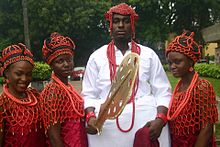
2.Decorative Chains: Chains are important adornment use by the Fulani, the Hausa and the Yoruba. The chains made by Goldsmith are worn as necklace and bangles.
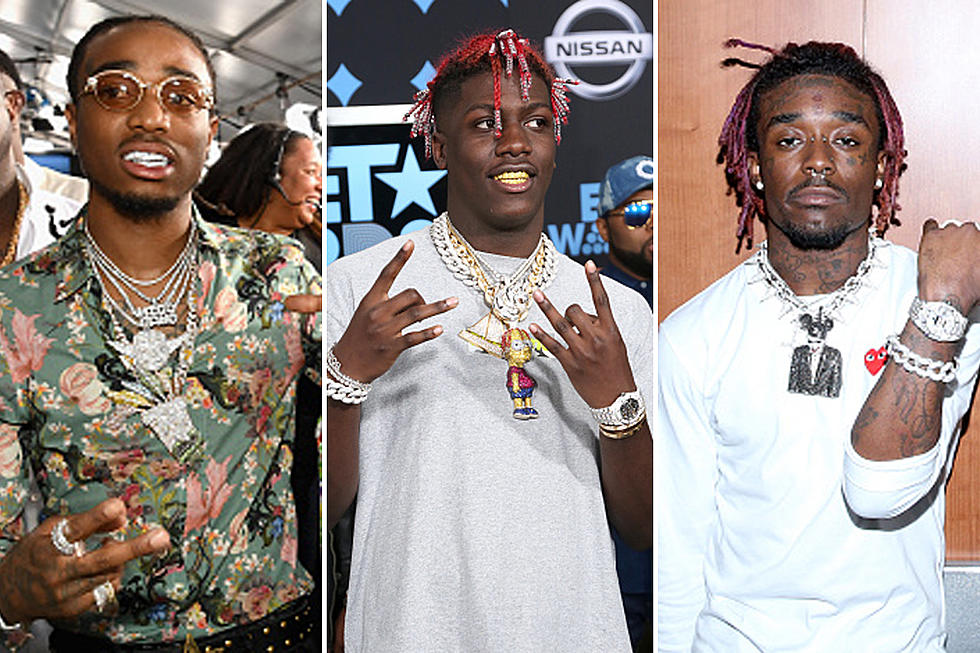
3. Rings: Goldsmith among the Yoruba, the lgbo and the Edo make rings which the men and women put on their fingers. The Fulani and Hausa women also put rings on their noses.

4. Hat And Head Gears (Head Ties): Hat and head gears are also items of adornment in Nigeria. Hats are worn by both males and females. Males in the north put on hats on daily basis, but those from the south wear it occasionally for ceremonies when they are gaily dressed. Christian women sometimes put on hat to church.
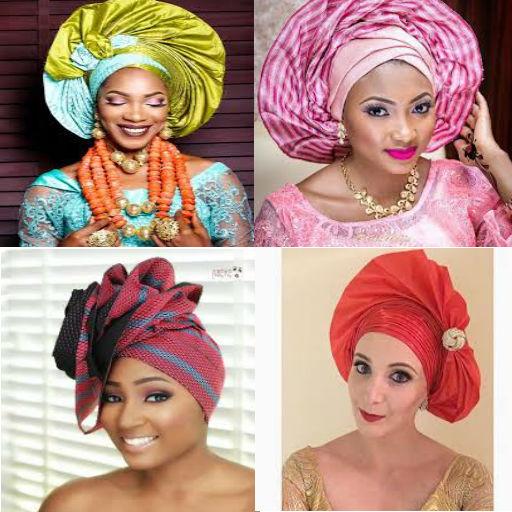
5. Cosmetics: These are makeup or substances applied on the body mainly on the skin in order to improve natural features. Examples are powder, body creams and oils.

Evaluation:
1. Define Adornment
2. Explain four adornments commonly used in Nigerian communities
READING ASSIGNMENT: Read chapter 11 of Solakat Social studies for Junior Secondary School Volume two by A. Oluwasola Oyewole pages 45-46
ASSIGNMENT
OBJECTIVE QUESTIONS:
1. ……… can simple be defined as an act of decorating things or the objects you use to decorate such things. a. Cotton b. adornment c. Cloth
2. Goldsmith among the Yoruba, the lgbo and the Edo make ………..which the men and women put on their fingers. a. Beads b. Cosmetics c. Rings
3. Males in the ……….put on hats on daily basis, but those from the south wear it occasionally for ceremonies when they are gaily dressed. a. South b. West c. North.
4. ……….. are makeup or substances applied on the body mainly on the skin in order to improve natural features. a. Cosmetics b. Beads c. Decorative Chains.
THEORY:
1. Define Adornment
2. Explain four adornments commonly used in Nigerian communities
TOPIC: Adornments:
CONTENT:
(a) Meaning of adornments
(b) Adornments commonly used in Nigerian communities (beads, chains, rings, etc).
Meaning Of Adornments
Adornment can be simply defined as an act of decorating things or the objects you use to decorate such things. They are cultural items used by people to beautify themselves. From ancient times both men and women have tried to outwit their mates by using different things to adorn themselves.

Adornments Commonly Used In Nigerian Communities
1.Beads: Beads are cultural items worn by both men and women in many communities in Nigeria. The Yoruba, the lgbo, and Itsekiri women use beads as necklace so also are some traditional rulers.


2.Decorative Chains: Chains are important adornment use by the Fulani, the Hausa and the Yoruba. The chains made by Goldsmith are worn as necklace and bangles.

3. Rings: Goldsmith among the Yoruba, the lgbo and the Edo make rings which the men and women put on their fingers. The Fulani and Hausa women also put rings on their noses.

4. Hat And Head Gears (Head Ties): Hat and head gears are also items of adornment in Nigeria. Hats are worn by both males and females. Males in the north put on hats on daily basis, but those from the south wear it occasionally for ceremonies when they are gaily dressed. Christian women sometimes put on hat to church.

5. Cosmetics: These are makeup or substances applied on the body mainly on the skin in order to improve natural features. Examples are powder, body creams and oils.

Evaluation:
1. Define Adornment
2. Explain four adornments commonly used in Nigerian communities
READING ASSIGNMENT: Read chapter 11 of Solakat Social studies for Junior Secondary School Volume two by A. Oluwasola Oyewole pages 45-46
ASSIGNMENT
OBJECTIVE QUESTIONS:
1. ……… can simple be defined as an act of decorating things or the objects you use to decorate such things. a. Cotton b. adornment c. Cloth
2. Goldsmith among the Yoruba, the lgbo and the Edo make ………..which the men and women put on their fingers. a. Beads b. Cosmetics c. Rings
3. Males in the ……….put on hats on daily basis, but those from the south wear it occasionally for ceremonies when they are gaily dressed. a. South b. West c. North.
4. ……….. are makeup or substances applied on the body mainly on the skin in order to improve natural features. a. Cosmetics b. Beads c. Decorative Chains.
THEORY:
1. Define Adornment
2. Explain four adornments commonly used in Nigerian communities
WEEK 8
LESSON 17
TOPIC: Religion:
CONTENT:
(a) The meaning of religion
(b)The names we call God in different communities in Nigeria
(c) Types of religion
(d)Things our religions teach us
(e)Similarities in our religions
The Meaning Of Religion
Religion is the belief of a group of people, it is the belief about the existence of God and human behaviour. It involves the belief in supernatural beings and their ability to influence the world and man’s existence in the world.
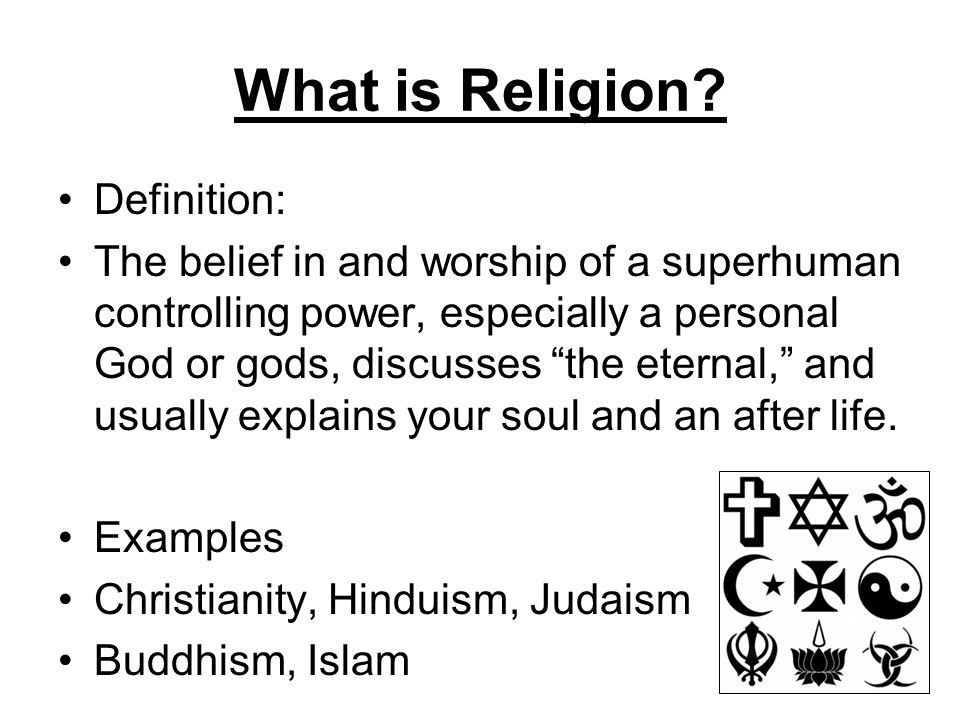
The Names We Call God In Different Communities In Nigeria
The different cultural groups in Nigeria speak different languages, because of the different languages, they have different names which they call the almighty God. The following are some of the names:
COMMUNITY -----GOD’S NAME ----- MEANING
1. Hausa/Fulani ----- Allah, Ugbangiji -----The source of all beings and sustainer of the world
2. Yoruba ----- Olorun/Olodumare: -----Almighty Supreme beings owner of all things and the Lord of heaven.
3. Igbo ----- Chukwu/Chineke -----The creator, the great spirit, source of all beings.
4. Urhobo ------ Oghene/Osonobrughwe: -----Almighty God. Possessor of all things.
5. Ijaw –----- Tamara: -----Maker of the soul, the creator, the supreme protector.
6. Itsekiri - -----Oritse: -----Almighty God.
8. Esan – -----Osenoble: -----The supreme being
9. Benin -----– Osanobua: -----The source of all beings and sustainer of the world
10. Etsako ------ Oghena/Eshinegba:----- God of heaven/God who created the heaven and earth.

Evaluation:
1. What do you understand by the term religion?
2. List five of the names we call God in Nigeria and give their meanings
LESSON 18
Types Of Religion
In Nigeria there are three major religions, these are;
1. Christianity.
2. Islam
3. African Traditional Religion.
Christianity
It is the religious belief of the followers of Christ, whom they believe is the son of the Almighty God. A person who believes in Jesus Christ is called a Christian. In Christianity there are many denominations such as Catholic, Assemblies of God Church, Celestial Church, Pentecostal Church, The Redeemed Christian of God etc.

Islam
Islam is the religious belief of Moslems, they are the followers of prophet Mohammed whom they believe was the servant of God. Followers of Islam are called Moslems, the believe in the five pillars of Islam.
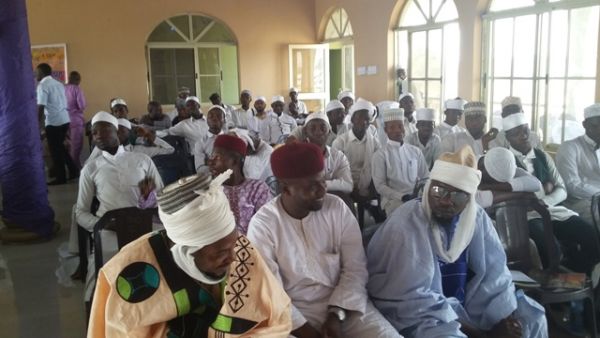
African Traditional Religion
This is the indigenous religion of the black people. It has been in existence before the white man came to Africa. This means that it has been with us before Islam and Christianity. The African traditional religion worshippers believe that there is only one Almighty God, but there are smaller gods through which he can be worshipped. Such smaller gods include Ogun, Sango, Ifa, Oramife, Olokun etc.
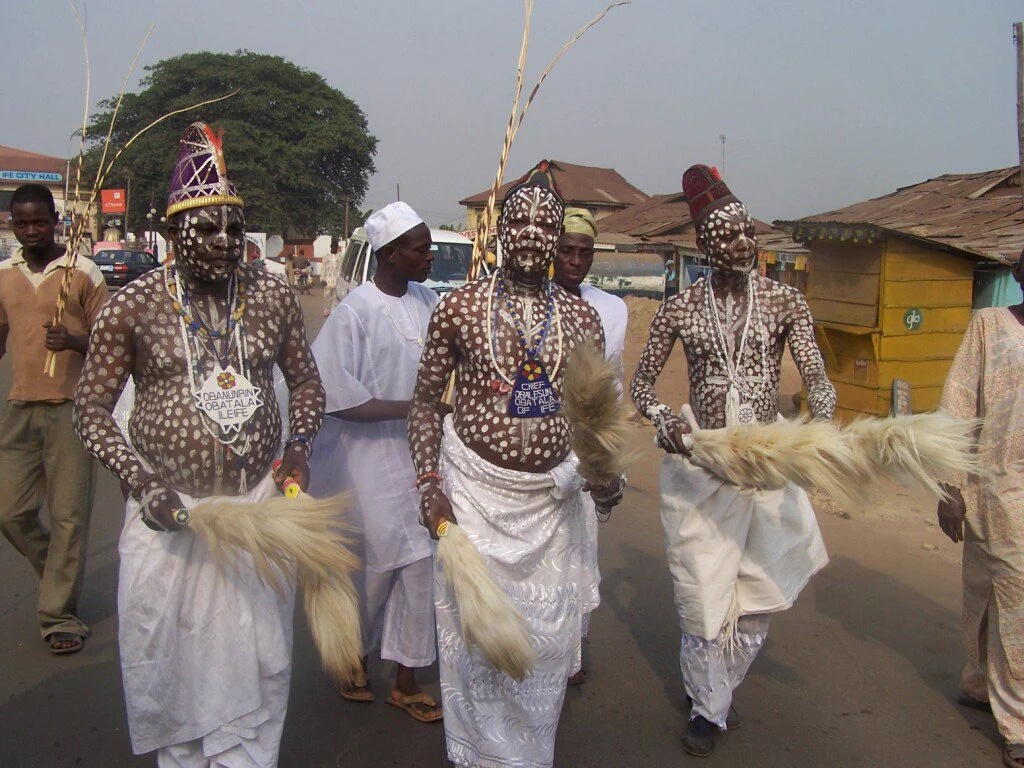
Things Our Religions Teach Us
1. Tolerance: All the religions in Nigeria teaches their followers to be tolerant.
2. Love for one another: All the religions being practiced in Nigeria teach us love for another.
3. Honesty: It is an act of being straight forward, truthful and up right in whatever you do.
4. Patience: Religion teaches us to be patient with each other in dealings with other people.
5. We should live in peace: We are taught to live peacefully with other people around us. We should never be violent with our neighbours.
Similarities In Our Religions
There are a lot of similarities in the doctrines of the three major religions in Nigeria. The following are some of the similarities
1. They all believe in the existence of the Almighty God who created the whole world and all that are there in.
2. All the religions try to curb the excesses of man; they try to regulate human behaviour through their moral teachings
3. They all teach love for other people so that we can live peacefully with others in the society.
4. They all believe in a life after this physical one where good people will be rewarded by living with God in his eternal kingdom.

Evaluation:
1. Name the different types of religions in Nigeria
2. Mention three of the things our religions teach us.
READING ASSIGNMENT: Read chapter 9 of Solakat Social studies for Junior Secondary School Volume two by A. Oluwasola Oyewole pages 35-38
ASSIGNMENT
OBJECTIVE QUESTIONS:
1. One major expectation of both Christians and Moslems is …….. a. Giving alms to the poor b. Being selfish and greedy c. quarrelling with each other.
2. Traditional worshipers, worship in a. Church b. Mosque c. Shrine
3. The head of Muslims in Nigeria is the ……… a. Alhaji b. Imam c. Sultan.
4. The name giving to God by the Hausas is………. a. Tamara b. Hall
c. Oghene
5. One out of the following is not the things our religions teach us.
(a). Hatred (b). Love (c). Honesty.
THEORY:
1. What do you understand by the term religion?
2. List five of the names we call God in Nigeria and give their meanings
3. Name the different types of religions in Nigeria
4. Mention three of the things our religions teach us
TOPIC: Religion:
CONTENT:
(a) The meaning of religion
(b)The names we call God in different communities in Nigeria
(c) Types of religion
(d)Things our religions teach us
(e)Similarities in our religions
The Meaning Of Religion
Religion is the belief of a group of people, it is the belief about the existence of God and human behaviour. It involves the belief in supernatural beings and their ability to influence the world and man’s existence in the world.

The Names We Call God In Different Communities In Nigeria
The different cultural groups in Nigeria speak different languages, because of the different languages, they have different names which they call the almighty God. The following are some of the names:
COMMUNITY -----GOD’S NAME ----- MEANING
1. Hausa/Fulani ----- Allah, Ugbangiji -----The source of all beings and sustainer of the world
2. Yoruba ----- Olorun/Olodumare: -----Almighty Supreme beings owner of all things and the Lord of heaven.
3. Igbo ----- Chukwu/Chineke -----The creator, the great spirit, source of all beings.
4. Urhobo ------ Oghene/Osonobrughwe: -----Almighty God. Possessor of all things.
5. Ijaw –----- Tamara: -----Maker of the soul, the creator, the supreme protector.
6. Itsekiri - -----Oritse: -----Almighty God.
8. Esan – -----Osenoble: -----The supreme being
9. Benin -----– Osanobua: -----The source of all beings and sustainer of the world
10. Etsako ------ Oghena/Eshinegba:----- God of heaven/God who created the heaven and earth.

Evaluation:
1. What do you understand by the term religion?
2. List five of the names we call God in Nigeria and give their meanings
LESSON 18
Types Of Religion
In Nigeria there are three major religions, these are;
1. Christianity.
2. Islam
3. African Traditional Religion.
Christianity
It is the religious belief of the followers of Christ, whom they believe is the son of the Almighty God. A person who believes in Jesus Christ is called a Christian. In Christianity there are many denominations such as Catholic, Assemblies of God Church, Celestial Church, Pentecostal Church, The Redeemed Christian of God etc.

Islam
Islam is the religious belief of Moslems, they are the followers of prophet Mohammed whom they believe was the servant of God. Followers of Islam are called Moslems, the believe in the five pillars of Islam.

African Traditional Religion
This is the indigenous religion of the black people. It has been in existence before the white man came to Africa. This means that it has been with us before Islam and Christianity. The African traditional religion worshippers believe that there is only one Almighty God, but there are smaller gods through which he can be worshipped. Such smaller gods include Ogun, Sango, Ifa, Oramife, Olokun etc.

Things Our Religions Teach Us
1. Tolerance: All the religions in Nigeria teaches their followers to be tolerant.
2. Love for one another: All the religions being practiced in Nigeria teach us love for another.
3. Honesty: It is an act of being straight forward, truthful and up right in whatever you do.
4. Patience: Religion teaches us to be patient with each other in dealings with other people.
5. We should live in peace: We are taught to live peacefully with other people around us. We should never be violent with our neighbours.
Similarities In Our Religions
There are a lot of similarities in the doctrines of the three major religions in Nigeria. The following are some of the similarities
1. They all believe in the existence of the Almighty God who created the whole world and all that are there in.
2. All the religions try to curb the excesses of man; they try to regulate human behaviour through their moral teachings
3. They all teach love for other people so that we can live peacefully with others in the society.
4. They all believe in a life after this physical one where good people will be rewarded by living with God in his eternal kingdom.

Evaluation:
1. Name the different types of religions in Nigeria
2. Mention three of the things our religions teach us.
READING ASSIGNMENT: Read chapter 9 of Solakat Social studies for Junior Secondary School Volume two by A. Oluwasola Oyewole pages 35-38
ASSIGNMENT
OBJECTIVE QUESTIONS:
1. One major expectation of both Christians and Moslems is …….. a. Giving alms to the poor b. Being selfish and greedy c. quarrelling with each other.
2. Traditional worshipers, worship in a. Church b. Mosque c. Shrine
3. The head of Muslims in Nigeria is the ……… a. Alhaji b. Imam c. Sultan.
4. The name giving to God by the Hausas is………. a. Tamara b. Hall
c. Oghene
5. One out of the following is not the things our religions teach us.
(a). Hatred (b). Love (c). Honesty.
THEORY:
1. What do you understand by the term religion?
2. List five of the names we call God in Nigeria and give their meanings
3. Name the different types of religions in Nigeria
4. Mention three of the things our religions teach us
WEEK 9
LESSON 19
TOPIC: Our School:
CONTENT:
(a) Meaning of school e.g. a place where people learn.
(b) Description of a school e.g. it contains teachers, students, other
workers, buildings and sport field- technique and learning, there
are channels of communication, rules and regulations etc.
Meaning Of School
A school is an educational institution in which young ones are prepared to become a functional member of the society. It is a place where people learn desirable attitudes, skills and values. Examples of schools are Nursery, Primary, Junior and Senior Secondary Schools.
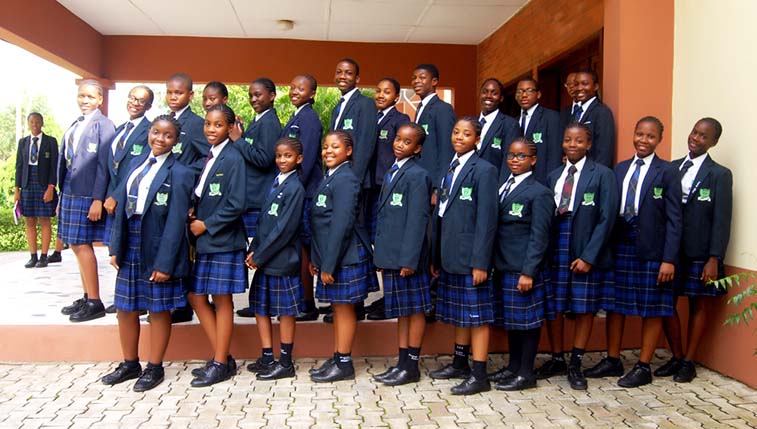
Description Of A School
Schools can take different sharps and patterns. The important things in the description of a school are the facilities that must be found in a school.
An ideal school must have the following facilities;
1. Classrooms
2. Administrative building/block
3. Library
4. Laboratory.
5. Sports field or play ground.
6. Staff room
7. Hostel
8. Sick bay
9. Dinning hall
10. Kitchen
11. Fence and gate house.
12. Multipurpose hall/school hall.
13. Computer room.
1. Classrooms: The classroom is a large room with large windows and doors for proper ventilation. There are chairs and tables for students to on sit on and write. Most teaching and learning processes take place in the classroom.

2. Administrative building/block: This block accommodates the office of the school head (principal), the bursar, the assistant school head, etc. This building acts as a reception to the school, all visitors to the school must first call at the administrative block.
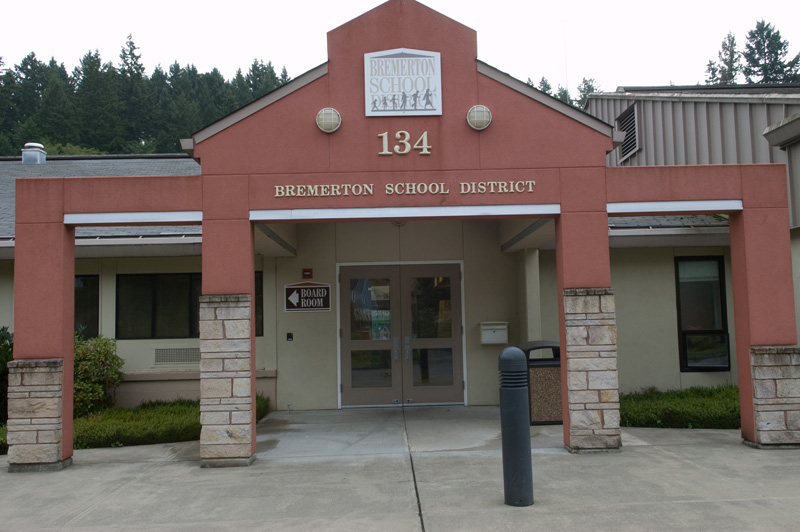
3. The Library: It can be attached to the administrative building or among other classrooms. Books and reference materials are kept in the library for students and teachers use. Both students and teachers go to read and borrow books from the library.

4. The Laboratory: It is a large room where science equipment are stored. It is the laboratory that students teachers carry out experiments.

5. Sports field/Playground: A school is incomplete without a play ground/sports field. It is an open space where school children can go and play during their break periods. It is also used for games and sporting activities like inter- house sports, football playing etc.
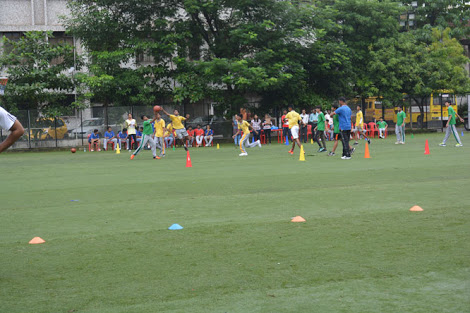
Evaluation:
1. Explain the term school
2. Mention the features that are found in a school
READING ASSIGNMENT:Read chapter 8 ofSolakat Social studies for Junior Secondary School Volume two by A. OluwasolaOyewole pages 31-32
ASSIGNMENT
OBJECTIVE QUESTIONS:
1. School for children between the ages of three and five years is called …….. a. Colleges of education b. Kindergarten c. Primary
2. A school is incomplete without a play ground/sports field. True or False
3. An ideal school must have the following facilities except one a. Classroom
b. Industry c. Library
THEORY:
1. Explain the term school
2. Mention the features that are found in a school
TOPIC: Our School:
CONTENT:
(a) Meaning of school e.g. a place where people learn.
(b) Description of a school e.g. it contains teachers, students, other
workers, buildings and sport field- technique and learning, there
are channels of communication, rules and regulations etc.
Meaning Of School
A school is an educational institution in which young ones are prepared to become a functional member of the society. It is a place where people learn desirable attitudes, skills and values. Examples of schools are Nursery, Primary, Junior and Senior Secondary Schools.

Description Of A School
Schools can take different sharps and patterns. The important things in the description of a school are the facilities that must be found in a school.
An ideal school must have the following facilities;
1. Classrooms
2. Administrative building/block
3. Library
4. Laboratory.
5. Sports field or play ground.
6. Staff room
7. Hostel
8. Sick bay
9. Dinning hall
10. Kitchen
11. Fence and gate house.
12. Multipurpose hall/school hall.
13. Computer room.
1. Classrooms: The classroom is a large room with large windows and doors for proper ventilation. There are chairs and tables for students to on sit on and write. Most teaching and learning processes take place in the classroom.

2. Administrative building/block: This block accommodates the office of the school head (principal), the bursar, the assistant school head, etc. This building acts as a reception to the school, all visitors to the school must first call at the administrative block.

3. The Library: It can be attached to the administrative building or among other classrooms. Books and reference materials are kept in the library for students and teachers use. Both students and teachers go to read and borrow books from the library.

4. The Laboratory: It is a large room where science equipment are stored. It is the laboratory that students teachers carry out experiments.

5. Sports field/Playground: A school is incomplete without a play ground/sports field. It is an open space where school children can go and play during their break periods. It is also used for games and sporting activities like inter- house sports, football playing etc.

Evaluation:
1. Explain the term school
2. Mention the features that are found in a school
READING ASSIGNMENT:Read chapter 8 ofSolakat Social studies for Junior Secondary School Volume two by A. OluwasolaOyewole pages 31-32
ASSIGNMENT
OBJECTIVE QUESTIONS:
1. School for children between the ages of three and five years is called …….. a. Colleges of education b. Kindergarten c. Primary
2. A school is incomplete without a play ground/sports field. True or False
3. An ideal school must have the following facilities except one a. Classroom
b. Industry c. Library
THEORY:
1. Explain the term school
2. Mention the features that are found in a school